|
by Jessica Rath New Mexico’s only Demeter-certified Biodynamic® farm. There’s a lot more to Abiquiú than Georgia O’Keeffe, once one looks a little closer. Not to detract from her fame and significance, but there are other topics of interest, and she would have been the first to agree. I learned about biodynamic farming and gardening when I lived in California in the 1980s and 90s. When I found out that there was a farm in Abiquiú that followed biodynamic guidelines and was actually certified by Demeter USA (a non-profit organization that upholds the required standards), I was curious: what motivated the owners to follow the biodynamic farming method? How did they end up in Abiquiú? I contacted Sarah and Peter Solmssen who kindly agreed to meet with me, answer my questions, and show me around the premises. But first you may want to know: what in the world is Biodynamic® agriculture? Biodynamics grew out of the work of Austrian scientist and philosopher Rudolf Steiner (1861 - 1925). During the early twenties, a few European farmers began to worry about the decline in soils; the loss of fertility; the increase of pests, fungi, and insects. Crops could be grown in the same field for fewer and fewer years, the quality of seed-stock was rapidly declining, and there was an increase in animal disease. The application of mineral fertilizers only seemed to intensify the problems. In 1924, a group of farmers and gardeners, soil-scientists and agronomists approached Dr. Steiner who had achieved recognition as editor of Goethe’s scientific writings. The resulting eight lectures, given in Dornach/Switzerland from June 7th to June 16th, 1924, have since been published as The Agriculture Course and form the basis for the biodynamic method. The first group of farmers who practiced this new method called it “biodynamic”, based on the two Greek words “bios” (life) and “dynamis” (energy). This name was meant to refer to a working with the energies which create and maintain life. Since life and health of soil as well as plants depend on the interaction of matter and energies, more than just organic and inorganic chemicals need to be considered. The ideal biodynamic farm is a self-contained, well-balanced ecosystem, with just the right number of animals to provide manure for fertility, and the animals, in turn, being fed by what the farm provides. The healthy and nutritionally balanced soil grows unstressed, nutritional plants, which in turn ensure the health of humans and animals. The vital forces of vegetable waste, manure, leaves, and food scraps are preserved and recycled through composting. And now, after this necessary digression we’ll return to the Solmssens. Peter, who was a member of the Vorstand (the managing board) of Siemens AG in Munich as its General Counsel and the head of its businesses in North and South America, retired in 2013. After having lived in Europe for ten years the question was “Where should we go back to?” Sarah suggested looking in New Mexico, because they both love the Santa Fe Opera and attended performances off and on for close to forty years. Sarah, by the way, had retired from a career as a public finance lawyer at a large Philadelphia law firm to raise three children. So, while Peter was still at work in Munich, Sarah came out here for a week, met with a realtor, and looked at everything within an hour’s drive from the Opera. They wanted to be able to bring their horses and they looked for privacy; for one week Sarah went everywhere – to Galisteo, Las Vegas, Pecos, Mora; even up to Coyote. This farm which was owned by Marsha Mason was the last place to look at. A monsoon broke while Sarah and the realtor were out in the bosque, with hail the size of golf balls! They got stuck in an arroyo, some guy in a pickup truck had to rescue them, and it was quite the pandemonium. Cesár, the property manager, said they'll never be back, but Paula Narbutovskih who worked for Marsha Mason at the time said, no, she’ll be back – I see it in her eyes. So – Sarah emailed Peter who was at work in Munich, and said: this is it! They bought the farm a few months later. Sarah: ”And we’re still here – nearly ten years later! Still feels like we just arrived.” They wanted to have a place for their horses. It was a farm already; Marsha had been growing herbs for her own line of cosmetics, Resting In the River. “We didn’t come here to farm, we wanted the space and privacy,” Sarah explained. “But since then we have become smitten! Also, Cesár had been working the farm for close to ten years. He is so invested, it’s his land too, and we love the fact that the farm supports four local families.” Peter added: “When we came we found that in addition to what Marsha needed for her cosmetics, some herbs were being sold to a company in Albuquerque for medicinal supplements. I was very suspicious about this ‘herbal stuff’, I felt it’s not scientific, it’s unregulated, it’s dangerous. But we learned a lot from our customer Mitch in Albuquerque who makes tinctures, pills, and herbal remedies. There’s a lot of good science behind what he sells and what he says about efficacy. The more I learned the more I became convinced of the benefits, so we grew more.” Sarah added that they also grow hay for the farm’s consumption, following the ideal of biodynamics: they’re planning to be self-sufficient this year and won’t need to buy any hay for the horses. I was thrilled to learn that most of Sarah and Peter’s horses are rescues. Sarah told me about Sierra, a little black quarter horse: “ When the horses come from kill pens, they’re sick, starved, and terrified. Frequently they’re very badly injured. I spent months nursing Sierra back to health. Once she was healthy again, I thought: this horse probably needs a job. We have a very good friend who does equine body work and she knows a woman in Tesuque who does horse-centered therapy for people; she runs a company called Equus. That’s where Sierra is now. A New York Times reporter heard about Equus, wrote an article about it, and my beautiful horse Sierra was featured in many photos: Can We Learn Anything from Horses.” They have six horses, five are on the premises right now. They also have two rescued donkeys, Romulus and Remus. And they have peacocks; after they got two from a neighbor, they sort of exploded, and now there are quite a few. They’re considered wild birds! It’s best not to feed them, or they will stay with you… and peck your car or truck. The males are very vain, they like to look at themselves in the shiny parts of a van or truck, and they peck on it. Peter explained that the horses play a significant role because of the manure, also the chickens and the donkeys; all contribute nutrition for composting. The compost pile could be described as the heart of a biodynamic farm, and composting as a key activity. But there is more to it than just heaping a bunch of organic leftovers together and letting them rot at random. It is a rather scientific way of producing humus, which takes ideal setting, size, moisture content, ingredient combinations, temperature, and so on into consideration in order to gain the most beneficial microorganisms and the highest concentrations of usable nutrients in the finished product. Crucial to biodynamic composting is the addition of certain substances, called “preparations”, to the finished pile. These contain enzymes, traces of certain types of natural humus, extracts of certain plants and activate the humus-forming process and “digestion” of raw materials. Most biodynamic farmers don’t make their own preparations, and Abiquiu Valley Farm gets them from the Josephine Porter Institute for Applied Biodynamics. The farm manager, Cesár Barrionuevo, is a graduate from some courses that they offer, and is a real expert. On the day before my visit the farm was audited for organic and Biodynamic compliance and passed with flying colors. Sarah explained that they do import one thing, namely the bedding that they use for the animals: organic barley straw from Colorado. They bring it down but it is organic, certified, and then goes into the compost. Peter took me on a tour: we walked the circuit of the farm, starting with the poop in the stable. Every morning it has to be cleaned out, and the stuff becomes compost. Next, we looked at the greenhouse, which is empty right now but earlier had 60,000 seedlings which were transplanted into the fields. They grow orchard grass and alfalfa for horse feed, and a variety of medicinal herbs: St. John’s Wort, Ashwagandha, Echinacea, and others. Steiner/biodynamic method at work! “One of the systemic problems with herbal remedies is that a lot of the stuff on the shelves of pharmacies isn’t what it says it is. Or it has the wrong dosage, which can be dangerous. That’s because there’s no regulation, no testing,” explained Peter. “Our biggest customer, VitalityWorks, takes both labeling and manufacturing processes very seriously.” “Mitch [the CEO of VitalityWorks] has a QA [Quality Assurance] lab that looks like an FDA-compliant facility!” Sarah added. “So, we were convinced that the tinctures and herbal remedies he sells are ethical and safe.” A biodynamic farm (or, on a smaller scale, a garden) becomes a teacher, where the observation of nature’s cycles, the connection with the living soil, and thoughtful planting and planning can have a transformative influence on the practitioner. While some organic farmers pursue a similar ideal and others do not, this is an essential and elemental goal of the biodynamic method. It will not only result in improved soil and thus healthier vegetables, but also in a deepened awareness of our connection with all living beings, and indeed with the cosmos. Biodynamic farming restores fertility, sequesters carbon and regenerates insect, plant and animal life. Each farm is a living farm organism, with its own individuality, and guarantees biodiversity through good practices like polycultures, crop rotations, virgin forests, long-term grassland, water bodies, insect and bird shelter, and wildlife protection. At least 10% of the farmland is left wild or dedicated to biodiversity. Chemical pesticides and herbicides are prohibited. The whole area certainly benefits from Sarah and Peter’s endeavors. Most of the electricity is derived from solar panels which can turn with the sun. The black fences are made from recycled plastic water bottles. And all the rescued animals have the best time of their lives and will be loved and cared for until their last breath. I’m so grateful to Sarah and Peter Solmssen for showing me around their special place, when a farmer’s time is at a premium. May you have a bountiful harvest this year!
9 Comments
AlwayzReal
I’m sure many of you have those people in your lives, or even places, that feel just right. Maybe you haven’t seen this person for a year, maybe even ten years, but when you get together, it feels like no time at all has passed and it’s smooth and easy. I have one of those people visiting right now, my longtime friend, Susan. She drove all the way out from Tacoma, WA to stay with us for just a few short days. We had planned to float the river, maybe take her on a scenic drive through Ghost Ranch, Abiquiu Lake and maybe land in Chama for lunch and squeeze a hike in there too. Well, as fate likes to do, the weather had other plans. Our float day turned cloudy and horribly windy with thunder and assumed lightning, though we saw none. Tree branches came down, the river looked like it was flowing backwards, some of our awnings came loose and are now in pretzel disarray. Being our friend's birthday, we were determined to do something uniquely fun. Earlier that morning, she and I had hiked up to the top mesa of Poshuouinge Ruins. I have been up to this stunning site many times and she had made this short and steep trek once herself on another visit. It was perfectly hot and cloudy and wonderful. The forest service has been up there every day for a while now. They are seeding the hills with native grasses, hoping to stave off erosion. It’s very impressive to watch those young men and women heft heavy straw bales and 50 lb sacks of seed all the way up that steep and rugged near mile trail! We also went to the farmers market, though it was small with only a few booths lined up on the shady side. I’m thinking the wind scared off a lot of the would-be vendors. We had dinner plans, but found ourselves with time to spare and decided that one of the best places in the Abiquiu valley to spend some pre-dinner cocktail time on a hot and wildly blusterous afternoon, was our very own rooftop deck overlooking the river. It was a great choice and we enjoyed watching the crazy storm pass through. As for dinner, we chose one of our favorite local gems, The Artesian Restaurant at Ojo Caliente. Like an old friend, this warm and inviting place is easy and smooth. We opted to sit in the bar area instead of the larger, louder and brighter dining room (that requires reservations, FYI). It was nearly full, with locals and visitors alike. Feeling mildly ravenous, we started with the Poblano Fries and my, oh my, these are good! Lightly battered long strips of poblano chiles, crisply crunchy and served with a side dipping sauce of a vinegar concoction with a hint of sweet and spice. The batter was a bit on the salty side, so I thought a savory aioli would be a better compliment and asked for a ramekin of their chipotle mayo. It was the perfect companion, cut the salt a bit and rounded out the chiles nicely. I ordered the Beet Salad for my entree. This is a huge portion heaped onto a lovely rectangular plate. Arugula was tossed together with toasted pepitas, walnuts, julienned beets, plumply sour cranberries in a slightly sweet raspberry balsamic vinaigrette and topped with a generous portion of a creamy goat cheese. As a rule, I don’t particularly like sweet dressings and this time was no different. Next time, I’ll ask for it on the side. The birthday girl went for the Green Chile Cheeseburger. Ordered medium rare, it came out perfectly. The meat was subtly gamey and the chile added the perfect amount of spice. A heap of shoestring fries and a large slice of tart pickle rounded out this old standby. My wife went out on a limb and ordered the Rack of Lamb. This dish was the star of the evening. It was perfectly roasted in a slightly sweet sherry reduction and served with a flavorful, buttery sweet potato mash. Though the menu indicated it came with broccolini, the asparagus that showed up was preferred by us all, even if it was left on the grill just a minute too long. Looking back at the description, it was listed as a sherry reduction, but those were definitely cherries hiding under the Rack, and they were indeed the perfect ending to the mash up of incredible flavors on the plate. If the food is this good, I don’t mind a few typos on the menu. My wife’s house made Sangria, my warming and bold Malbec and Susan’s tame Pellegrino, were a perfect pairing for a lovely evening and birthday celebration. Though this splendid dinner did not disappoint, in my opinion, the use of a little less salt and sugar would elevate this meal to an even higher level of deliciousness. Satiated and full, a sleepy drive home in the comfort of familiar friends, off to bed we went. By the way, the entire decadent meal came out to about $160. AlwayzReal I know I’ve said this a lot, but, it’s worth saying over and over again, I love this place so very much and often, can’t believe that I get to live here! This year is showing up to be one of the best years yet. The weather has been glorious, the river is high and the green green green is just great great great! Yesterday is just one of the reasons that I love living here. My wife and I drove the sleepy mile over to the weekly farmers market, hoping to score a fresh loaf of her favorite bread, whole wheat miche, from Jacona Village Bakery. We found a shady spot to park, grabbed our shopping bag and eagerly cruised the long rows of bustling booths. Pop ups full of homemade goods. Aromatic soaps and beautifully crafted candles with embedded flowers and herbs. Giant, tempting cookies. Guadalupe’s hot tamales and Elotes slathered with mayo, Parmesan cheese and a subtle red Chile powder. There are jars full of homemade jams and jellies and the beautiful display of RZs Bees, from the Ohkay Owingeh Pueblo, of their locally harvested honey. It always looks like art to me. I was glad to see that Bill was back with his colorful hand made fishing lures. If my wife wore earrings, I’d buy her some of those delicately feathered hooks to dangle from her ears. The patience it must take to make these lures is bewildering. He uses so many creative materials. He told me once that some of them have bits of fur in them! And, of course, all the vegetables and herbs. Tables loaded with baskets overflowing with deep red beets and peppy radishes. Succulent spears of asparagus and strangely large chive bundles. Heading back to our car, my wife spotted a new booth with a sign boasting, “free tarot readings.” I’m always up for any insight for my future, so happily took a seat in the comfortable chair across from Adriene Jenik, who for the first year in Abiquiu is offering tarot readings juxtaposed with the current climate conditions. She made her own deck from agave paper and hand painted each card with a unique ecological symbol. I can tell that she is gifted, but I have no idea what my reading means. Maybe I need a few more days to let it settle… Still being on a waistline reduction effort, I was hoping that we’d get out of the parking lot without succumbing to the unfeathered lure of ice cream from the Frosty Cow, but no, the wife couldn’t help it and said the forbidden words I’d asked her not to utter, “let’s get a milkshake”! Bad wife! Feeling defeated, but hoping for a surge of willpower, I entered the bright and chilly dining room of the Frosty Cow. There is a huge chalkboard menu, colorfully listing all of their choices of scoops, shakes, sundaes and more. There are sandwiches, hot and cold. One day I hope to try the Turkey Bacon Melt. I was wishing they had a salad menu to help me with my waning willpower, but alas, tempting Paninis and ice cream it was.
My wife ordered her favorite, the java chip milkshake, extra whipped cream please and I ordered…nothing!!! I did it! Well...maybe just one little sip. Feeling proud and strong, I made it out of that parking lot with a bag full of healthy veggies, a loaf of bread, some delicious looking brined goat feta from Malandro farms, but most importantly, my integrity! By Zach Hively Fool's Gold Injustice plagues us. So very, very many injustices. A man can feel overwhelmed by the great variety and scope of injustice out there. Partly this is because, being a man, he is unfamiliar with experiencing any injustice more severe than a bad umpiring call. Mostly it is because he can do very little to fix all the injustice, and he would much rather fix the injustice than think about it. Unfixed injustice makes him uncomfortable.
If you sympathize with this man, he’d rather not talk about it. Feelings make him uncomfortable too. But I—I would recommend identifying one single injustice you CAN fix. Preferably a personal injustice. Taking direct action against it will do wonders for your self-esteem, much more than wanting to fix the whole world but ending up falling asleep on the couch. My chosen injustice is this family I see in town with an impeccably trained border collie, the kind who locks eyes on its human and reads their minds and can go into public places without stealing someone’s french fries or attempting to play tug-of-war with their forearms. I love my dogs very much, and I almost never forget to walk them or feed them. They are Very Good Dogs. But when I watch this border collie, I suddenly and deeply appreciate those old “My kid can beat up your honor student” bumper stickers. You adolescent Einsteins would be safe with my older fella, Hawkeye, who has never beaten up anything tougher than a tree branch. If your kids are smart enough to throw a tennis ball, Hawkeye will be their friend. He has border collie-like focus on anything thrown. He also has no desire to interact with strangers outside of this throwing-things arrangement, which means he and I understand each other. My younger dog, Ryzhik, on the other hand—he really COULD beat up your honor student. He would not do so out of academic inferiority. He would, however, do so out of sheer and boisterous friendliness, and a strong misconception about his own body mass. I am fairly helpless to prevent this ballistic playfulness; Ryzhik knows all his basic commands, but he knows them best in two languages I don’t speak: Russian, and English with a Russian accent. You see, his foster dad was from Russia. “I have been teaching him in English too, so that he is learning how to listen to you,” his foster dad explained to me. “Also, we have not been calling him by his name. We have been calling him Ryzhik. Is a cute nickname. You pronounce it well. But you are not needing to follow his name with saying ‘and squirrel.’” I have now spent the better part of two years perfecting my terrible Russian accent, the better to communicate with my dog. This does not help matters when Ryzhik is joyously beating up a schoolchild, though, or a grandma out for a walk—honor roll or not. So: to mend the sense of injustice I experience when I see the border collie intensely NOT gumming the skin off some elderly pedestrian, I took Ryzhik to a professional dog trainer. I anticipated learning some insightful hacks to create more effective two-way communication with my dog, which I could then use to tell him to sit down and get over here and drop that old lady RIGHT NOW YOUNG MAN and other useful things. Ryzhik is indeed very smart; I just needed him to learn to listen to me through my thick American accent, thus becoming not only a Very Good Boy but an immaculately well-behaved one too. Let him become someone else’s injustice—let them envy me and my dogs! Little did I know I would be the one getting trained. First up, I learned that I most definitely was not using enough treats in my daily life routine. I thought that a command well executed was its own reward, plus massive amounts of praise and physical affection. Nope! Turns out that I, like my dogs, need more than that. What my dogs want most are pellets of salmon and peanut butter the size of your typical pencil eraser. These are how I let my dogs know they are safe and loved. And after a successful training session, I give myself pieces of chocolate. This is how I know I am safe and loved. Second up, I learned that there was far more to my early childhood education than I ever suspected. One of my earliest school memories is showing up one day and being expected to conduct long division. But did you know I had multiple years of schooling leading up to that triumph? I did not! It must be true, though, because dog education is founded on the same principles. Whatever early schooling Ryzhik had, we’re starting fresh. Which is fine by Hawkeye—he gets treats simply for hanging out with us. He really likes training. As for fixing injustice? The biggest injustice is how little I’ve worked with Ryzhik up til now. But that’s all changing, and I will keep you posted on our progress. Just as soon as I get my arm back. ~AlwayzReal We all probably acquire things that we intend to use later or sell or hope to fit back into one day. Last week I had it and decided to gather a trailer load of these stored items and take them to the Habitat for Humanity Re-store. Loaded on my borrowed neighbor’s 16 foot trailer were boxes and boxes of stuff. Things like dog sweaters, wrapping paper, heaters, coolers, weird unused kitchen gadgets, floor lamps, etc. Also some big stuff, like a refrigerator and an electric stove from the 60’s. I’d called ahead, hoping that they would come pick up all this booty, but was told that their one and only pickup guy had retired and that I could either wait a month (definitely not) in hopes that they hire a new guy, or bring them to the store myself. So choice B it was. After 3 employees, my wife and I had crammed all the goods into the donation sorting room, we couldn’t resist cruising the store, as we are always on the lookout for that special, unique bargain item to inspire our next build or, maybe a perfect Yart piece for the garden. We love this store and appreciate the intent of all Habitat for Humanity Re-stores. As builders, we have visited many many of these stores across the US. My favorite one is in Bremerton, WA. Acres of organized building materials at crazy good prices. The Albuquerque store is also a good one, though lately it seems the prices have near doubled. We downright boycott the Santa Fe location. Often the prices are higher than new, which we have brought to their attention and were met with snobby indifference. Fortunately, this day, we left with only 2 small ice trays, which we badly needed as ours had cracked just a few days ago. Now after all this work and feeling like we deserved a treat, we finally chose to eat at Ken’z Cuisine. Since I’ve been writing this weekly article and have a mandatory obligation to dine out at least once a week, I have packed on some extra, unwanted pounds. I gathered my fading will power and put myself on a severe food restriction 9 days prior. But, after reading the menu, I quickly decided to jump off of my diet and just go for it. Well, go for it, we did. Our dear friend, John, drove out from SF to join us for dinner. He knows Ken and made the evening more special by Ken coming to our table several times throughout the meal. We hadn’t yet made it to Ken’z Cuisine, mostly because we were confused. The outside of the building has a couple of nicely painted mural style signs stating it to be the Blue Heron Brewery and Pizza House. We kept hearing rumors that it was now Ken’z Cuisine but for some reason or another, just kind of back burnered it. Walking in through the back door entry (the only entry), we were surprised by the humble, yet elegant decor. There’s a sweet hand painted sign warmly welcoming all guests. We were met immediately by a lovely young woman to be sat at a comfortable table with large windows looking out on the sparsely treed Espanola plaza. We ordered a rich vibrant bottle of red from Chiripada Winery, the wife chose one of the many beers on tap and we all opted for the avocado croquettes as a starter. Ken came out of the kitchen to greet John and we ran our possible menu choices by him. He confirmed that we chose well, so we ordered the Cleo Naranjo Seared Salmon with mango salsa, the Crimini Mushroom and Spinach Pasta and the Chicken Parmesan. We ordered the Chicken Parm a la “Italian Christmas,” (a term cleverly coined by Ken) with both the pomodoro and the green chile alfredo sauces. I truly cannot say enough good adjectives about this food. I’ll try to keep it short, but, my goodness, this meal was DELICIOUS. We placed all three of the entrees in the middle of the table and decided to rotate clockwise after each of us got several forkfuls onto our appetizer plates. I started with the salmon. It was perfectly seared with a crisp but delicate coating of savory herbs, orange juice and…butter? The salmon was cooked to a tender firmness that is hard to achieve. It was plump and fresh and placed atop some of the best rice pilaf I’ve ever tasted. Julienned carrots, subtle herbs, and again, butter?
Next came the pasta. It was a perfectly al dente linguine drenched with a creamy white sauce and nicely complimented with the crimini mushrooms and spinach. We all wished that there was a little more spinach, but were very pleased with the overall flavor. The leftover sauce paired perfectly with the endless basket of delicious ciabatta bread, warmed to a taut and crunchy perfection and served with a soft, house herb butter.
We couldn’t quite finish all this splendor, so we packed our leftovers into our always-with-us to go container for later. Though we were comatose-ly full, I was committed to jump very far off of my diet, so asked for the dessert menu. We opted for the Lemon Curd Napoleon. This was equally remarkable as the entrees. Puffed pastry delicately filled with a tart and sweet creamy lemon curd, surrounded by lightly sweetened whipped cream, drizzled with raspberry sauce and succulent, slightly sour raspberries. I highly recommend Ken’z Cuisine to you all. The prices are very reasonable for the portions and the splendid quality. The decadent meal came to about $180 for the three of us, including tip and tax. During one visit to the table, Ken unraveled all of our confusion by telling us that he had merged with the former tenant, Blue Heron a while back, and that they had harmoniously been coexisting as a brewery pizza joint and fine dining, but, that the Blue Heron is completely severing from that location and Ken will soon be the sole tenant. He does get to keep the pizza menu going and plans to put his own flare on it soon. He is also on the verge of acquiring a full liquor license. Some of you may be familiar with his previous location at the Delta Inn, and some of you may recognize him from his days at El Paragua as a bartender. He promised an invigorating and unique cocktail list once the license gets approved. I hope he takes advantage of the opportunity for free advertising with some tables placed on the portico facing the plaza. I can picture a warm summer afternoon sipping Mojitos and Margaritas and crunching on the Fried Calamari that we just couldn’t justify ordering for this visit. Emerging stuffed from Ken’z and seeing the trailer empty kind of felt like losing 10 pounds (which I’m apparently not trying so hard to do). Jessica Rath For horses, donkeys, dogs, cats, and one pot-bellied pig! And, I almost forgot: two resident mice who live happily in a spacious terrarium. When I found out that there is an animal rescue organization in our area, I was excited because I love animals. And when I heard that their location was not far from where I live, I just had to learn more about it! The owners, Tina and Mike Kleckner, graciously agreed to meet with me, show me around, and let me take photographs. It was so heart-warming to get to know these two people who dedicate their lives to rescuing neglected, abandoned, threatened animals and to witness the deep, genuine love they give to their charges. They had no plans to take in animals when they bought their property in Youngsville. It sort of just happened – and the way they grew and changed with each new rescue is truly remarkable. It all started with one horse, Arrow. A good friend of Tina and Mike’s, Bridget McCombe from the Abiquiu Inn, had been rescuing horses from Oklahoma kill lots. Horse slaughter is outlawed in the United States, and any horse no longer useful to its owners will be sold or auctioned off at kill lots. From there, they’re sent to be slaughtered in Mexico. The transportation is inhumane and horrible. So, when Bridget had brought a truckload of horses back to Abuquiú and asked Tina and Mike whether they’d be willing to take one, they brought Arrow home. He was a thoroughbred off-track horse on his way to the slaughterhouse. Only three years old, he had won some 23 races, but because he was too young when they started racing him he developed a little bone spur, was deemed useless for making more money, and was sent off to slaughter. He changed the Kleckners’ lives, when they realized how much they could do for horse rescue. They acquired some more horses, but then, Mike told me, he really wanted a donkey. And a pig. When Tina came home from a weekend visit with her mother in Kansas, she was greeted with a loud HEE-HAW and first thought that their horse Belle had gotten ill with bronchitis! But no, this was Josephine. And soon after, they got another donkey, Wyatt. And quite recently they added Shoni, a donkey who had lost her siblings to sand colic – a serious gastrointestinal ailment which develops when the animal grazes on a sandy pasture. Since donkeys are very social creatures, the former owner felt that Shoni would be lonely all by herself, and so she joined Josephine and Wyatt. And the pig – I was curious, how did they end up with a pig? Tina explained: “ We’re now licensed by the State of New Mexico Livestock Board. We’re one of twelve licensed rescues in NM. When we get a call about an injured or hurt animal, we call the State of NM, and they will legally pick them up. They house them on their site for five days, and if nobody comes forth to say they are theirs, then we can legally adopt the animal. The State of NM called us a couple of months ago and said they had a pot-bellied pig that somebody had alerted them about over in Velarde. He was living in the wild, somebody must have dumped him, and his ears had recently been removed.” Mike added: “One ear was clearly cut off. The other ear was mangled, and dangled off his head.” Tina continued: “So, they asked, ‘Can you take the pig’? Pot-bellied pigs are considered pets, not livestock, so they couldn't take the pig, but they could pick it up and bring it to us, if we would be willing to give it a chance. We said, sure, bring him out. We knew nothing about pot-bellied pigs, but we knew nothing about horses either when we started, and we learned everything. So, they brought the pig, and we wondered, could it have been a coyote who bit off his ears, or a dog? But we noticed his reaction to human beings. He snapped at us like an alligator, he was mad at the humans, but he liked the dogs. Then we read up about earless pigs, and there were other cases where humans cut off their ears – to train their dogs for wild boar hunt. They use the pig with a bloody ear as bait. It took him a couple of weeks before he finally stopped snapping at us, and now he’s like a dog, he trusts us, but we had to earn his trust.” He probably can’t hear much because of the scar tissues around his ears, but all his wounds have healed really well. He wags his tail, and he loves everybody. “He gets along with the horses and the donkeys, and the dogs, and the humans. He’s part of the family”, Mike adds. “Pigs are so intelligent, I was trying to feed him, I had some older bananas cut up on a dish. I tried to put it down over the fence, and he figured out how to get the banana out of the dish which wasn’t easy for him to do because his mouth just doesn’t work that way. He turned the page about a week ago. He’s a totally different pig now. Before, when we had food, we had to be afraid he’d snap at us, but now he’s fine.” And what’s his name, I asked? Mike chuckled. “We didn’t know whether he was a boy or a girl. It’s hard to tell with a pig. We thought she was a girl and named her Piggy Sue, but then we found out he’s a boy. So Tina wanted to call him Sue anyway, because Johnny Cash wrote a song about “A Boy Named Sue''! Then somebody said, call him Sumo, so that’s what I like, and I call him Sumo.” But for Tina, his name is Piggy Sue. “If you listen to the words of the song, it’s just like our pig, because he snapped at us like an alligator. In the song, the parents called him Sue to make him stronger; he lost his ear in a bar fight, and he snapped at some guy like an alligator! This is too weird! So he’s got to be a Boy named Sue!” Mike said that they have a total of 26 animals that we’re feeding. Seven horses, three donkeys, six dogs, seven cats, and two mice! Another story! They have some barn cats, and they noticed that they were playing with something on the ground. Something tiny – the size of a thumb – no eyes – rolled up into a little ball. Mike exclaimed, it’s a baby mouse! No hair! He started stroking its chest, and soon he noticed that it’s breathing! He took it inside, researched what to do next, and learned: where there’s one there’s more. Sure enough, when he went back out he found another one. Mike got a tiny paint brush and some baby formula, and he set the alarm, and every four hours he would feed these two little mice. Nine days later, they opened their eyes. They probably were only a day old when he found them. They could never survive in the wild, once they’re used to being fed. Both Tina and Mike became quite attached to them. At a Holiday gathering they had a line of people waiting to go into the bathroom to see the two little mice (who live in a large terrarium) and to hold them because they are so cute. But if they had a male and a female, they’d multiply…. They called their equine vet who’s used to work on 1000-LB animals, and asked whether he could castrate the boy. “The vet thought we were nuts”, Mike laughs. “Finally somebody told us to wait another six weeks. If you have a male and female, you’ll have babies. But if you don’t, then you know you’ve got two females. And we never had babies.”. I was curious: “Did you already have this ranch when you took in the first horse?” Mike explained that they had the house, but nothing else. They went to Big R in Santa Fe, bought some horse panels, and built a round pen. Then they built the paddock where the horses spend most of their time. Then they fenced in some pasture land, then they built some walk-ins, so the animals could get out of the wind and the sun, and then they built a barn. It was a process, because there was absolutely nothing for horses here. They bought some water buckets and some horse panels and built the round pen – that’s how it started. When I looked around outside, at the two big barns, the different paddocks, and the feeding stations with lots of hay, I was duly impressed. What a labor of love! Tina agrees. “ We had the heart and the passion, the willpower to do so, but it was a lot!” Mike adds that they started in 2018, so everything one can see has been accomplished in the last five/six years. It’s been a journey! Mike and Tina have so many stories about all their rescued animals, one could write a book. Here is another one, the story of Marshall, a German shepherd mix. They had a chihuahua when they first moved out here, and the poor creature was killed by a coyote – right in front of Tina’s eyes. So, they decided they needed a big dog. Two days later Tina found a totally emaciated dog right by the Youngsville post office, one could see each of his rib bones. And he followed her home, two miles on a dirt road. When the dog saw the rain barrel he just plopped right in it and started drinking. Then he took a big dump, and out came a ketchup package from McDonalds’ – he must have been scavenging for a while. He was so emaciated and had mange all over. Tina and Mike decided to clean him up and started feeding him – that’s how they got Marshall. He’s not a marshal but a marshmallow, Tina claims, but he does a good job chasing off the coyotes. The Horseshoe Canyon Rescue Ranch is limited to taking in only ten large animals. For other animals, Tina and Mike try to find connections; for example, the Christ in the Desert Monastery has two horses that they arranged. “This is good, because Mike and I do this all by ourselves”, Tina adds. “We don’t have help. So, we don’t want to get so big that we can’t give each animal proper care. That’s our mission right now; we had a call yesterday about nine wild mustangs in Colorado – would we take them? We can’t, but I connected them with somebody who can. We have a huge network now, the State helps us a lot with that too.” “ This work comes with a lot of heartache. We had our first equine loss last week, Belle, she probably was in her twenties. She was the first horse we directly purchased from the kill lot. That was tough. She’s in a great spot now, in the back, where we have a little cemetery.” Tina is clearly moved, but she has a wise strategy that helps with grief. “A friend told us, ‘this dog or horse taught you so much to love, and now in your heart you have room for another one.’ When we lose an animal, we make sure we fill that spot right away.” Mike adds, “ When we lost a cat, we came back with two! Another one of our special needs, he’s blind in one eye, and only one ear! This is Rocky – from the Rocky-movie – and we got Adrienne, his girlfriend, both from the shelter.” With Marshall as guard dog and three donkeys (they keep coyotes away too), Mia, the chihuahua mix, can safely enjoy the sun. What a pleasure to know that all these animals who otherwise would be suffering or dead have such a safe, happy place for the rest of their lives. Thank you, Tina and Mike Kleckner!
~AlwayReal
A friend of ours needed a reprieve from the stifling heat of Austin, Texas, and asked if she could come stay a few nights to relax, cool off and maybe get some river floats in. We said, of course, we always have room for friends! So, a few days later, she drove up with her three chihuahua mixes. We got her settled into our sweet little guest quarters and gathered to make plans for the few days that she’d be with us. The weather has been all over the place, sometimes downright chilly! I’m a temperature wimp, most happy at degrees between 70 and 85, and had no interest in plunging into our cold river. None of us did, so we decided to take her on a driving tour. Three humans and our collective five dogs piled into our roomy van and headed north. We planned to drive to Ghost Ranch and maybe go for a hike, knowing that even if the dark, looming clouds turned into thunderous heavy rain, she would likely get a thrill out of the amazing visuals alone. It’s unbelievable to me that we are lucky enough to live amongst this stunning landscape. Ghost Ranch is always breathtakingly beautiful and this day was no exception. We collectively decided to not risk getting caught in a lightning storm mid hike, so headed out with Echo Amphitheater as our next stop. Sadly, it was still closed for these ominous upgrades that I keep reading about in the Abiquiu News. My bar is getting higher and higher for the big reveal. Ah well, she’ll have to wait until her next visit. Our end destination was slated to be the town of Chama, where we hoped to grab some lunch before heading back home. Driving into Chama is a different experience each time I go. My wife and I have been there during art festivals where the town is thriving and packed with locals and tourists. All the gift shops and restaurants are open and the charming coal train is spewing black toxic fumes into the clear blue sky. Other times it looks like a ghost town, shuttered, quiet and gray. This trip was one of those. Driving in, we were almost the only car on the road and hardly any businesses were open. We cruised the mile long tourist strip. Foster’s Bar kind of looked open, so I volunteered to hop in to do recon on the food situation. The bar was open with a handful of locals, but the restaurant was not. On our way into town, we passed Local, which had a sign saying that they would open today at 4. That gave us about 40 minutes to do a driving tour of the behind the scenes town. I love looking at architecture and was happy to have the time and the forced company of my wife who really doesn’t like to be kidnapped on these excursions at all. In this case, she had no choice and she ended up admitting to enjoying it a little. When we pulled up to Local, the outdoor gas fire pit was aroar and nice music was softly playing in the large, attractive outdoor seating area. We leashed up our pack, hoping to sit at one of the inviting tables by the fire, but it was too cold, so we loaded all the furries back in the van and got a nice table inside. This place has a really nice feel inside and out. It’s got a ski lodge vibe with, hopefully, fake game heads, comfortable couches, individual and group tables, tall ceilings and the biggest etch-a-sketch hanging on the wall that I’ve ever seen. It’s an order at the counter setup, which allowed us to ogle the huge, wood fired pizza oven in the very clean, open concept kitchen. Seeing that, we opted for pizza. We also ordered a couple of cups of the soup of the day, which was a delicious and very spicy chorizo chili with beans. Not being super hungry, we ordered only one pizza to share. They have one size, a 14 incher. We went for “The Rustler,” which had pepperoni, bacon and green chile. My wife ordered one of their many beers on tap and our friend and I asked for water. As many readers know, Chama has been having issues with their water for a very long time now. They ran out of water last summer after not fixing a long term leak in their storage tank and now are dealing with a “boil advisory.” Thus, we were offered bottled water at $2 a pop. Thankfully, they allowed us to bring in our personal water bottles from the car. The chili arrived first and we dug right in. I have a high spice tolerance and preference, but this version was spicy! I asked the nice GM for a side of sour cream to soften the tongue burn. It helped and I truly enjoyed it to the last spoonful of the black bean-y chorizo yumminess. I hope this becomes a regular choice on the menu. Our pizza arrived in a cloud of delicious aroma. It was perfect! A soft mozzarella cheese atop a savory subtle tomato sauce. The bacon, pepperoni and chili were a nice trio to compliment the perfectly crunchy and tasty wood baked crust. We all agreed that this is the best pizza in this part of the world and wished that we had ordered more. The last time I had crust this perfect was in Naples, Italy. Just sayin’… One unfortunate part was that everything was served on paper or plastic, which was confusing as the prices are on the higher side and there were attractively rolled high quality napkins resting on cute, small, metal trays that we happily assumed were intended for the pizza. Furthermore, we were brought way too many paper plates and plastic forks and knives that we didn’t use but hoped would not be tossed. We had to ask why this was the case, and were told that it’s the way that they are dealing with the “boil advisory.” I did see a commercial dishwasher and do not understand why this wouldn’t suffice as methods of commercial sanitization require boiling water and/or a chemical sanitizer. It was a bit confusing to use plastic-ware along with thick, dense cloth napkins and I wish there had been something posted to tell customers the situation. But, I do understand that restaurants have to make decisions that don’t always make sense to the patrons. Overall, we really liked this place and hope that the town of Chama can figure out the water issues and continue to head in the direction it seems to be going, which is up. Lets keep it local by visiting Local! FYI a small lunch was about 50 bucks, but keep in mind their prices include a 15% service charge so we don’t need to figure tip into the total.
~ Brian Bondy
The world is an amazing place. It’s natural beauty, it’s glorious variety, it’s amazing opportunities for adventure. Sometimes though, nature plays ‘tricks’ on us. Hurricanes, earth quakes, volcanoes, sinkholes, etc. Yes, the world is a fascinating place. If you’ve never been to Yellowstone National Park, then you are missing out on seeing some natural wonders that are very active and somewhat dangerous. Geysers, hot springs, mud pots. They are glorious. One thing though, they pretty much stay in one place. There’s a mud spring in California that’s been moving about 20 feet a year, since 2016. So, like Melanie, ‘don’t go too fast, but it’s gone pretty far’. I paraphrase. This mud spring started in a farmer’s field in 1953. It wasn’t moving then, just appeared in a field and sat patiently, not causing any particular harm, for decades. In 2016, the farmer noticed the mud spring had moved. In 2018, the spring was moving towards a railroad, so the railroad attempted to block it….unsuccessfully. So, while this all sounds like one of my April Fools jokes, it’s true, and there’s a great video on it, below.
Watch the video and learn why they think the mud puddle started moving. The video comes from someone called Physicsgirl, on YouTube. She has other interesting videos as well.
Ben Daitz According to Albert Einstein, “The only thing that you absolutely have to know is the location of the library.” No doubt Einstein was confident about the locations of many libraries, but so too are the folks who live in rural New Mexico, in the villages of Vallecitos, El Rito, Dixon, Abiquiu, Magdalena, and Glenwood, and other small communities across this state, and the country. They know exactly where their libraries are, and that they are essential to the educational and social fabric of their communities. I can tell you about New Mexico’s rural libraries because Shel Neymark told my wife, Mary Lance, and me stories about several of them at a party, during a break while playing music together. Neymark, in his early 70’s, is a jazz fiddle player, a nationally known ceramic artist, and community organizer, who was honored this year, along with 9 other “New Mexicans who made a difference.” Shel Neymark’s difference is his creation of The New Mexico Rural Library Initiative, which prompted the legislature to establish a New Mexico Rural Library Endowment Fund, a hoped-for permanent support base for the 55 rural and tribal libraries in New Mexico. . Mary and I are documentary filmmakers--- and bibliophiles--- and in the dreary doldrums of the pandemic, a trip to a rural library felt like a nice break, and maybe a good story. The next week, we booked it---we met Shel at the Vallecitos Library. Vallecitos The road to the Vallecitos winds through the high desert, sage covered mesas of Northern New Mexico, then gradually ascends, curving above a string of little valleys--- Vallecitos, in Spanish. The village of Vallecitos is nestled in the last of the valleys, and if you miss the turn-off, the paved road ends soon after, at the boundary of the Carson National Forest, where the villagers’ livelihoods logging that forest ended decades ago. The narrow lane to the library, past eroding adobe walls framed by stately old cottonwoods is a starkly beautiful picture of hard times. Vallecitos is one of the most economically depressed communities in a state with the same problem. The 2020 census counted 238 people living in and around this village, and they are an aging population. There are few children here, and the closest elementary school is 25 miles over a mountain pass, the closest grocery store about 50 miles. There is no cell phone service, the internet is absent or limited, but there are 2 landlines, real telephones--- one at the firehouse, and the other at the Vallecitos Community Center and Library. Ernie Giron grew up here, moved away and came back. He is a wiry, ruggedly handsome, mustachioed, man in his mid 60’s, who has been a logger, fire-fighter, musician, and former Chief of the Vallecitos Fire Department. He’s also a craftsman who helped, along with other community members, to renovate and restore the Vallecitos Community Center and Library. Ernie is the Vice President of the Library Board. Ernie will tell you that the library’s thick adobe walls were probably built in the 1880s, when this isolated community of Spanish and Native Americans, who farmed and cut timber to sustain their families, became loggers, cutting pine and spruce for the railroad ties and train cars that ultimately hauled their future away to Santa Fe and Denver. When the mills were working, Vallecitos had several bars, a dance hall, baseball teams, a horse racing track, and a general store that became a run-down adobe ruin, rumored to have a marijuana grow inside. It’s now been lovingly restored by the community, full of books, DVDs, and computer terminals. Marlene Fahey, a former corporate executive who retired with her husband to Vallecitos, began a second career as a volunteer librarian and manager of the Vallecitos water system. “Many people here do not have a telephone,” Fahey said. “Many people do not have electricity or running water. So they come to the library. They can use the computers, make photocopies, send faxes.” During the worst of the Pandemic, the library’s telephone was available day and night on a bench under the front portal. Fahey and other community volunteers provided transportation to clinics, hospitals, and shopping for people with disabilities and no transportation. The library’s internet access was the only option for kids’ on-line learning while their schools were closed. Volunteers offered additional tutoring in the library’s main bookroom, lined with shelves, and comfortably heated in winter by the woodstove. “This Library is kind of like their connection to the world,” Ernie Giron said, talking about his community, “cellphones don’t work here, and a lot of folks come here at nighttime and just park here so they can get wifi.” We’d come to visit on an early summer afternoon when the library was sponsoring a talk about researching family genealogy. The event was festive—homemade enchiladas and frito pies with musicians playing in the background. Former residents of the village who’d returned for the occasion were comparing childhood memories. Shel was sitting under the long portal of the library. “We’re hoping that the Rural Endowment Fund will help libraries, like this one, hire employees and pay them well. This place and so many others are staffed just by volunteers.” he said. “One of the big problems in rural libraries is that employees are paid minimum wage or a few dollars above it,” Shel said. “There’s a library director in Northern New Mexico who managed a $500,000 capital project, besides running the library, managing volunteers, writing grants, and she gets paid $12 an hour, and that’s just not right as far as I’m, concerned, and librarians around the state in rural areas are getting that kind of salary.” Ernie Giron and his community’s digital connection to the rest of the world is not as important as their love of place. They chose to live in rural America, along with over 200 million others, and it’s clear this library has become a center of their wellbeing---an important educational and social determinate of their community’s health. Dixon Cipriano Vigil is from Chamisal New Mexico, one of the centuries old mountain villages along the so-called “high road” to Taos. Now in his 80’s, he is to New Mexican folk music what red or green chile are to enchiladas. An honored musician and archivist of traditional songs, he tells the story of learning to play the guitar by hanging out with the “resolaneros”, groups of musicians who gathered to play in front of a sun-warmed adobe wall. Resolana means a sunny spot, a warm inviting place--- like a library--- and the Embudo Valley Library and Community Center, just down the road from Chamisal, has both adopted the word and replicated the feeling. It’s worked. In 2015, The library, in the village of Dixon, was winner of the National Medal of Museum and Library Services. Spanish settlers named this fertile valley and the river that drains it, Embudo--- a funnel--- channeling its flow to the nearby canyon of the Rio Grande. It is home to Hispanic, Pueblo, and Anglo people--- farmers, ranchers and artisans. Many rural libraries are also community centers, in both name and function, and if you’re driving through Dixon, downtown is the library, and its complex of adjacent buildings. Shel Neymark was one of the founders 30 years ago, in a run-down house with stacks of donated books and the help of community volunteers. The library’s collections are now in a new, solar-powered building with a bank of windows looking out at a heritage apple orchard. Next door is a very popular thrift store whose proceeds help support the library, and next to that, a thriving combination food coop, deli-restaurant which pays the library rent. On the adobe-plastered outside wall of the food coop is a 20 foot long, sinuous ceramic sculpture, a tiled topo map of the Embudo Valley and it’s acequias, the ancient irrigation ditches that feed the valley’s small farms and its people. Neymark supervised and mentored a group of teenage Dixeños who made it. It’s a town landmark. A new community center is under construction, and meanwhile, broadcasting 24/7 from a cramped room in the thrift store is KLDK, 96.5, a community run low power, FM radio station. Every Saturday morning, Archie Tafoya is at the mic with the “Arcenio El Norteño” show, a mix of Northern New Mexico music, local news and chatter in Spanglish. Archie, a jovial, gentle, life-long resident of Dixon is a poet, musician, and retired from his job at the Los Alamos laboratory. “We are all siblings of the library,” he says, “the library has been very influential in keeping the culture of the area. And it’s a source to come to. I hear people say, ‘Yeah, I need to go to the library to get this faxed, or help with my taxes’, “and the library seems to be the center they come to.” Tafoya attributes the library’s success to Shel Neymark and a dedicated group of volunteers. Shel told us that most libraries are funded by municipalities, but rural libraries in unincorporated areas need to be 501(c)3, non-profits, and according to New Mexico’s archaic anti-donation law, they can’t receive state funds for structural improvements, or even to pay the electric bill. Shel was successful several years ago in getting bipartisan support for the Rural Library Endowment with an initial $13 million legislative appropriation, but he’s after $50 million, which at a 5% State investment would give each of the rural libraries about $45 thousand a year. Glenwood Heading west from Socorro, in the center of the state, you reach the Catron County line about halfway across the vast plains of San Augustine. In the 1990’s, Catron County was called “The Toughest County in the West,” because of conflicts between ranchers, loggers, environmentalists, and the U.S. Forest Service over land use, spotted owls, and wolves. In 1993, The Catron County Commission passed an ordinance requiring every citizen to own a gun. It’s still on the books. On this August day, the Plains of San Augustine are dressed in sunflowers, a gown of yellow extending to the Very Large Array, a line of giant radio-telescopes whose round faces also bend to the heavens, like alien sentries along the horizon. The Village of Glenwood, population 57, In the southwestern corner of the county, is ranching country, and conservative, hard by the Arizona border to the west, and the vast Gila Wilderness to the east. Like Vallecitos, there are no grocery stores here. The elementary school is closed for lack of students, and the few remaining are bused to a school 30 minutes away. Lynn Neidermayer is the Glenwood Community Library’s director and sole employee. She is exuberant, engaging, and an accomplished ceramic artist whose whimsical tile work, along with child and adult contributors, adorns the outside back wall of the library. Most everybody for miles around seems to know her and values her book-cased domain as a safe place--- a space that has helped to bridge this rural community’s political and environmental divide. She began that effort 12 years ago by starting a monthly book club. This morning, Neidermayer is facilitating a lively discussion of The Chilbury Ladies' Choir by Jennifer Ryan, among, as she described them, six very diverse women. The only rules---you can talk about the book, your family, your vacation, or yourself, but not politics. “What I love,” Neidermayer says, “is bringing people together, the ranchers and the environmentalists who would normally be in two different worlds, opposing each other. I’m trying to make the library a place where both can meet and feel safe.” Her next job was attending to a family of 4 teenagers, driven by their mom from Reserve, the county seat, an hour north. The kids are out-of-central-casting wholesome, engaging, and smart. They are also home-schooled, and this is their library. They each arrive with a big shopping bag for books, and leave with them stacked full, many recommended by Neidermayer, along with wise literary critiques. The library’s collection is impressive, over 11,000 books, 3000 dvd’s, and 600 audio books, each extensively described and cataloged thanks to a volunteer, Mike Rose, a retired professor of anatomy who has taken special pride in developing the classics section. Neidermayer says the audio books are extremely popular because folks must drive so far to get supplies, to visit the doctor. And for people who can’t get out because of disabilities or lack of transportation, Lynn Neidermayer makes home visits. Today, she visits a woman who recently lost her husband, and a man who she describes as a bit of a hermit, bringing them books, dvds and just plain kindness. Abiquiu The adobe walls of the Santa Rosa de Lima church are still standing, but the sanctuary is open to the sky. A mile south of Abiquiu, the ruin is marked by a large white cross. The church was built in 1744 by Spanish settlers, an outpost of families on the frontier, who were repeatedly forced to retreat to Española, 20 miles south, because of raids by Comanche, Ute, Navajo, and Apache bands. Then, some Spanish official had an interesting idea. Why not send the Genizaros up to Abiquiu. Genizaro comes from Janissary, slaves of the old Ottoman Empire, forced to fight as an elite corps for the Sultan. In their conquest of New Mexico, the Spanish also captured Pueblo and other Indians and enslaved them, albeit with a redeeming dose of Catholicism thrown in. If they were sent to Abiquiu, maybe they could be a friendly deterrent to attack. Abiquiu, sited on a mesa above the Rio Chama with a commanding view of the surrounding red rock canyons had been the site of a pueblo called Moqui, where Hopi-Tewa people had lived well before the Spanish invasion. The Genizaros reclaimed it, and families of their descendants, 3 centuries later, started the Pueblo of Abiquiu Library and Cultural Center. The library, just across the Plaza from St. Thomas the Apostle Church, used to be a family home. Now, a painting of Avanyu, the Tewa water serpent, floats above the entrance. An old adobe with wandering rooms full of books, computers, and glass cases of art and artifacts, it’s open to all. It looks and feels like a traditional library, but it has become a center of Genizaro research nationally. Scholars and graduate students from major universities have come here and used genomic testing to validate peoples’ multi-tribal heritage, they’ve studied community members’ attitudes about their history, and written theses about its irrigation systems and rock art, its culture. “We listen to the concerns of our community, and we try to address them in our programming,” Isabel Trujillo said. Trujillo, a vibrant, welcoming is the director of the library, and largely responsible for coordinating its research efforts. “We try to highlight local native arts, you know, because that pertains to us and our history,” Trujillo said. And to reinforce that history, she was leading the weekly teenage book club in a discussion of “An Indigenous People’s History of the United States for Young People,” by Roxanne Dunbar-Ortiz. On this summer day, a dozen elementary school kids are assembled on the library’s shaded patio, hand-building micaceous pots under the tutelage of Debbie Carrillo, a master potter, originally from Abiquiu. “For a very long time, this library did not exist. There was nothing like this here. Culture and community was basically the church,” Carrillo said. “Culture here in Abiquiu and the surrounding area was not even viewed as culture, because guess what? We live the culture, and the library preserves it.” Magdalena
Sometime in the 1590’s, about 30 miles west of Socorro, in central New Mexico, a Spanish soldier, perhaps over-tired from a long march looking for gold, thought he saw the image of Mary Magdalene on the side of a mountain. A priest agreed, reminded of a mountain with a similar image in Spain. If Mary Magdalene was a good omen, and gold the everlasting quest, they missed the clue. 300 years later, in the 1880’s, Magdalena’s Kelly Mines started digging gold, silver, zinc, and lead below the mountain’s face. Around the same time, ranchers from western New Mexico and eastern Arizona began driving their cattle and sheep across the vast Plains of San Augustine toward the brand-new Santa Fe rail line that had just reached Socorro. A spur line west to Magdalena meant big business in both meat and mining, and the new Santa Fe depot marked Magdalena’s motto, “The End of the Trail.” The mines and the cattle drive are long gone, but the original Santa Fe depot has been the Magdalena library for over 40 years, and Ivy Stover is the librarian. “I’m the library director, I’m the catalogue librarian, I’m the children’s librarian and the reference librarian and the adult librarian,” Ivy said, sitting at her desk in the station manager’s office next to the ticket window, “I’m in charge of programs, setting them up, making them happen, physically setting up, like chairs and such.” Plus, she conducts tours of the Boxcar Museum, an old Santa Fe Box car, filled with mining, railroad and cattle-drive memorabilia on a siding next to the library. Ivy Stover, a vibrant young woman with a carnation in her hair, grew up in Socorro and was a library aide in high school. She has a degree in creative writing and a master’s in library science, but that didn’t prepare her for starting a new job in a pandemic. “When the schools were closed and they were trying to figure out on-line schooling, I taught kids how to do crafts in story-time videos on Facebook Live. I’d read a story and then show kids a simple craft they could do at home,” Ivy said. Today, she’s teaching kids how to code---eight elementary and middle school children, on summer vacation, but busy on a bank of computers learning computer code, making their own video games. The kids are from the Kids Science Café, located just around the corner, a non-profit that offers experiential scientific opportunities for these lucky rural kids. The Café and the library are partners. “This library was one of the first places in town to have internet,” Ivy said,” and now we and the schools have fiber-optic as part of a pilot program.” “I believe libraries provide intrinsic value to their communities. I hear it all the while when people come in, ‘Oh wow, I didn’t know Magdalena had a library!’ It really feels like having a library in a rural community provides a sense of legitimacy. We’re one of the pillars of the community, one of the institutions.” *********** Shel Neymark is driving to Santa Fe for Library Day at the New Mexico legislature. The state coffers are full of oil and gas money, and everybody wants some. Shel leads a long line of librarians to the offices of representatives and senators on both sides of the aisle, handing out leaflets and lobbying for a full $50 million in Rural Library Endowment Fund. He’s told by a State Senator and sponsor of the bill that there may only be an additional $15 million. That would give each of the rural libraries about $25 thousand a year. “Not nearly enough,” Neymark says, “it’s still not a living wage for what these librarians do, and what they mean to their communities.” He promises to be back next year.
Designed by Renowned Architect and Woodworker George Nakashima
~Jessica Rath
If one wants to visit Christ in the Desert, the Benedictine monastery near Abiquiú, one has to drive north on US 84 past Ghost Ranch, and turn left on Forest Road 151. It’s a dirt road which becomes quite winding and steep at times, with towering sandstone walls on one side and deep chasms on the other. Signs warning of flash floods and falling boulders aren’t reassuring either. While I was driving along the almost 15 miles for my meeting with Brother Chrysostom, Guestmaster at the monastery, it struck me that hardly anything had changed during the almost 60 years since the monastery was founded. The road was just as rugged, just as undeveloped now as it was around 1964.
This was definitely one of the reasons for choosing the location, as Brother Chrysostom later explained to me. The site of the monastery is surrounded by the Santa Fe National Forest, which would guarantee the silence and solitude required for the monastic life.
The monastery was founded on June 24, 1964, the day of the Feast of St. John the Baptist, the patron saint of the Order of St. Benedict to which Christ in the Desert belongs. There was only a ranch house, nothing else was there. Father Aelred Wall had found the site, and became its first Prior. With very limited resources but lots of dedication, Father Aelred and a handful of fellow monks began to build a community which would eventually provide a home for around 18 monks, accommodate overnight guests, maintain a gift shop, AND offer solar-powered electricity!
The first building that went up was the chapel. Father Aelred turned to his personal friend George Nakashima, a Japanese American architect and furniture maker who had won numerous awards, for the design of the chapel. Because he knew that the monks had no money, Nakashima offered his services for free. Another benefactor was Georgia O’Keeffe; the Christ in the Desert Monastery website sports a lovely picture from the mid-1960s of Father Aelred, George Nakashima, and Georgia O’Keeffe
Brother Chrysostom provided me with lots of interesting details about Nakashima’s life. His parents immigrated to the United States, and he was born in Spokane, Washington, in 1905. He earned his Masters in Architecture from the Massachusetts Institute of Technology in 1931 (incidentally, Brother Chrysostom is an alumni of MIT as well). After graduating, he spent a year in Paris, then went to Japan, and eventually to India. In Japan he had worked for the American architect Antonin Raymond. When Raymond’s company was commissioned to build Golconde, a dormitory for the Sri Aurobindo Ashram in Pondicherry, Nakashima finished the project after Raymond returned to America.
All this happened years before he came to Christ in the Desert. He was a world-traveler, a seeker, trying to find out what his purpose was. Brother Chrysostom called him an amazing man who wanted to experience everything on a deep level. When he was in Japan, Nakashima had met Marion Okajima, who would become his wife. They returned to the United States in the early 1940s when Nakashima became convinced that as a builder of furniture he could achieve his standards of design and craftsmanship. And then they were interned as Japanese Americans during WW2, George, Marion, and their young daughter Mira. At the relocation camp in Idaho he met a man trained in traditional Japanese carpentry who taught him the use of traditional Japanese hand tools and joinery techniques.
In 1943, the architect Antonin Raymond who had become an honorary consul and had quite a bit of influence, vouched for Nakashima and his family and they were released from the internment camp. They moved to resettle in New Hope, Pennsylvania, where slowly George built his shop and home on several acres of hilly woodland. From there, Nakashima became entrenched in woodworking, and by 1949 he was established as a designer and builder of fine, handcrafted furniture.
Father Aelred had connections to many important and famous people, that’s how he happened to get George Nakashima involved with the design of the chapel. According to Brother Chrysostom, it is arguably one of the tallest adobe structures in the world, because of the steeple! Nakashima designed it, and it was built with the help of volunteers over a number of years. It was first used in 1968, and ever since. Brother Chrysostom thinks that Nakashima probably was involved with the choosing of the site, the location where the church would sit, given the majestic view of the canyon behind it. “Thomas Merton once remarked on one of his two visits here that this church is probably the most monastic church in the U.S. the way it is situated, the architecture, everything”. That is high praise, indeed.
I asked whether he did any furniture for the church? “Yes indeed, he created some of the pews and seats in the original configuration. We no longer have those, we have other pews that were crafted in Mexico and brought up here. But our tables and chairs in the refectory are pure Nakashima. They’re very heavy and durable and probably last 600 years!”
I had to ask Brother Chrysostom about his name: is it Greek?
“Yes, I’m named after my Patron Saint, St. John Chrysostom of Antioch who was one of the early patriarchs in the church, I didn’t get the name because my secular name was John. Generally when we enter the monastic life we get a completely changed name, that’s the whole purpose, your life has changed. Chrysostom was the name that I submitted, St. John Chrysostom was a doctor of the church, and what he was known for was his preaching. His name is actually an adjective, it means Golden Mouth. His name was John, and Chrysostom was an add-on. It’s a high standard to reach!” I think he can be very proud of that name!
I’ll close with a quote by Nakashima about the concept of the buildings:
“Architecture and structure are not just abstract ideas; they must relate to the environment of the building and the materials available; in a sense a structure evolves from the materials used. I am at war with the usual architectural practice of starting with form; this is an egotistical concept for then you are left having to fit structure into form. Here, we are 25 miles from the next town and getting materials is a big task in itself. But we have adobe in the Canyon and we have vegas, so it’s natural to use them. The use of adobe affects the structure and appearance of a building. The walls have to be very thick, between three or four feet; the openings are therefore small and the form of the building is necessarily very different from most modern buildings with their large expanses of glass and curtain walls”. Jubilee, September 1065. Many thanks to Brother Chrysostom who kindly took the time to chat with me, and with gratitude to Mira Nakashima and David B. Long for providing me with a number of useful newspaper clippings! |
Submit your ideas for local feature articles
Profiles Gardening Recipes Observations Birding Essays Hiking AuthorsYou! Archives
October 2025
Categories
All
|



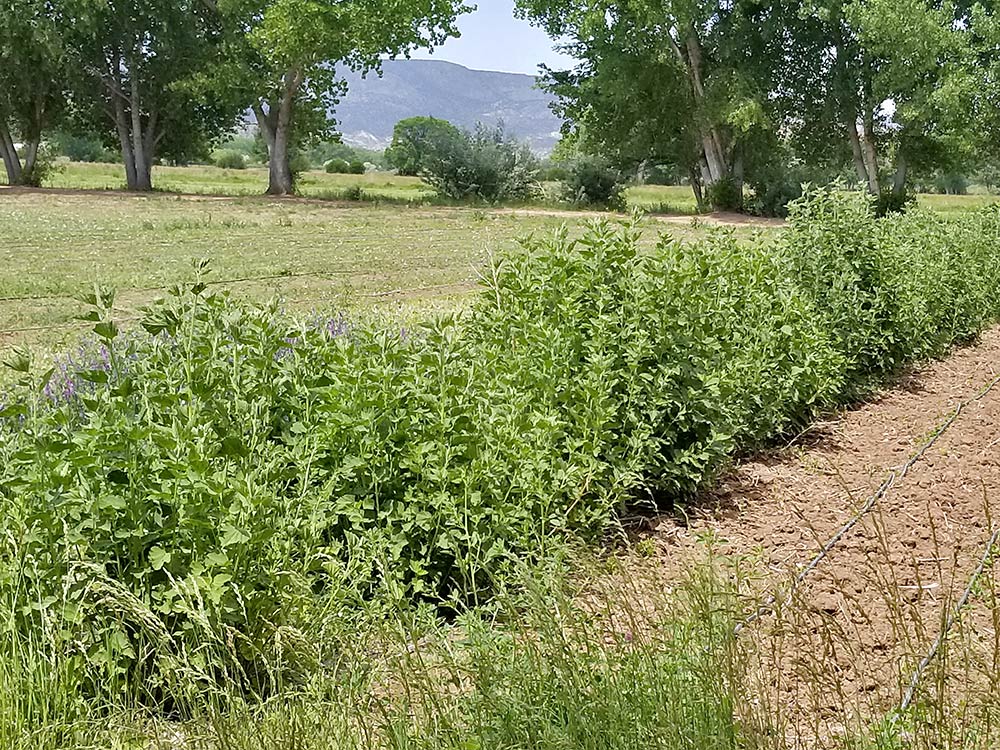

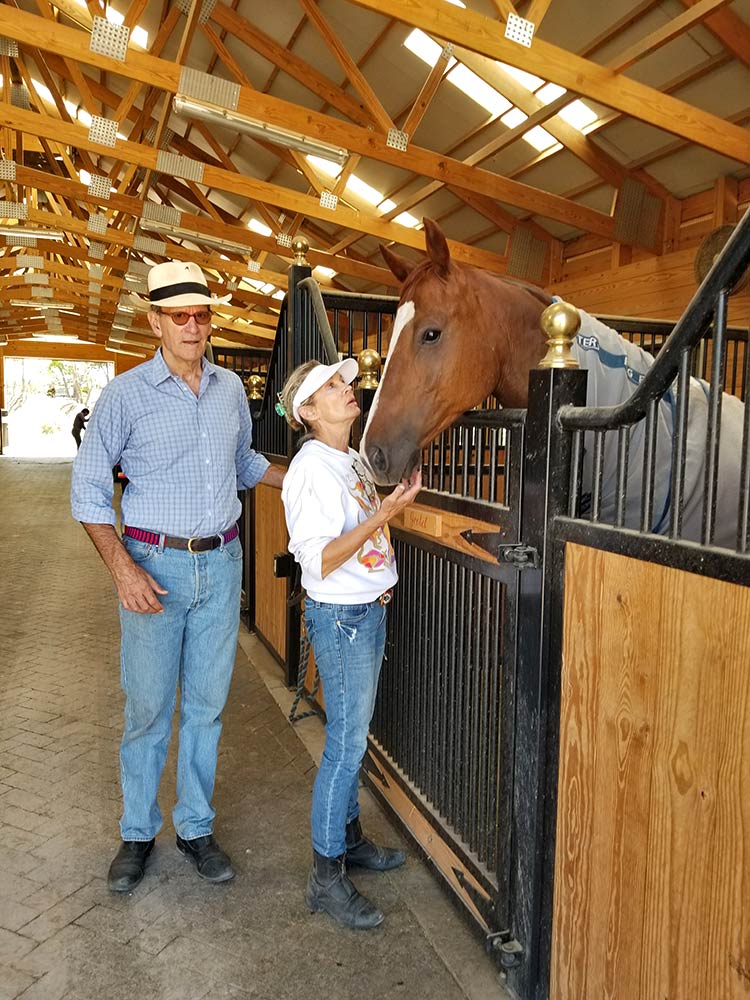
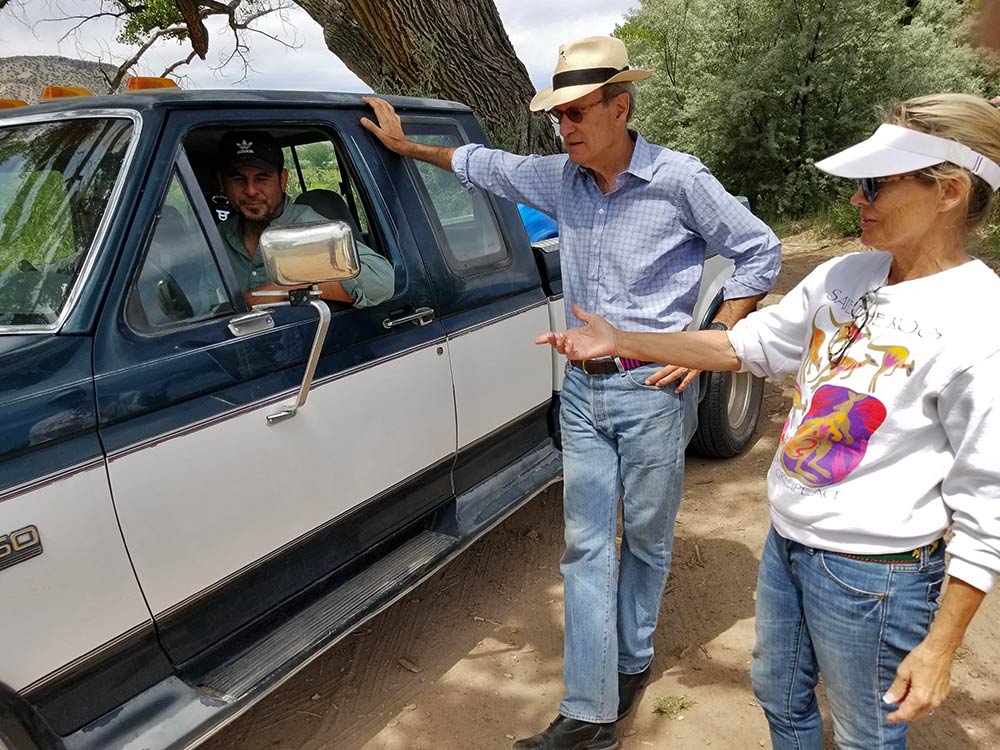
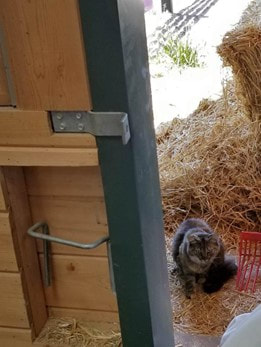
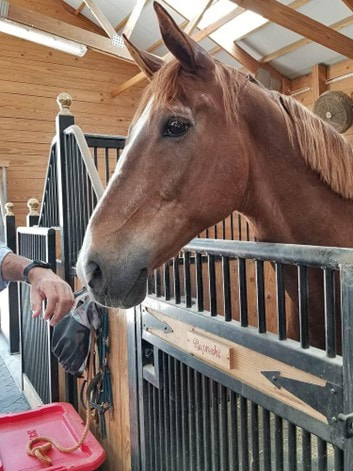
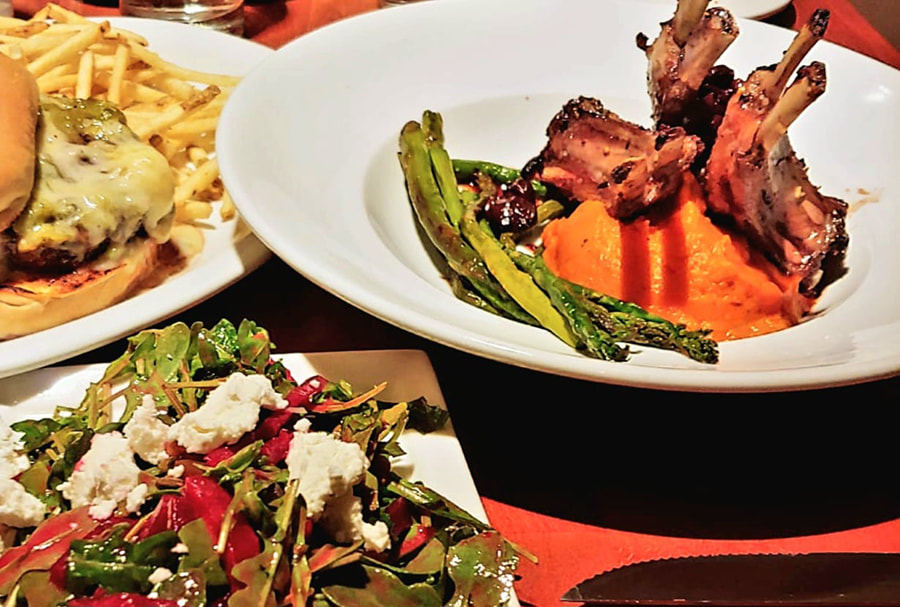


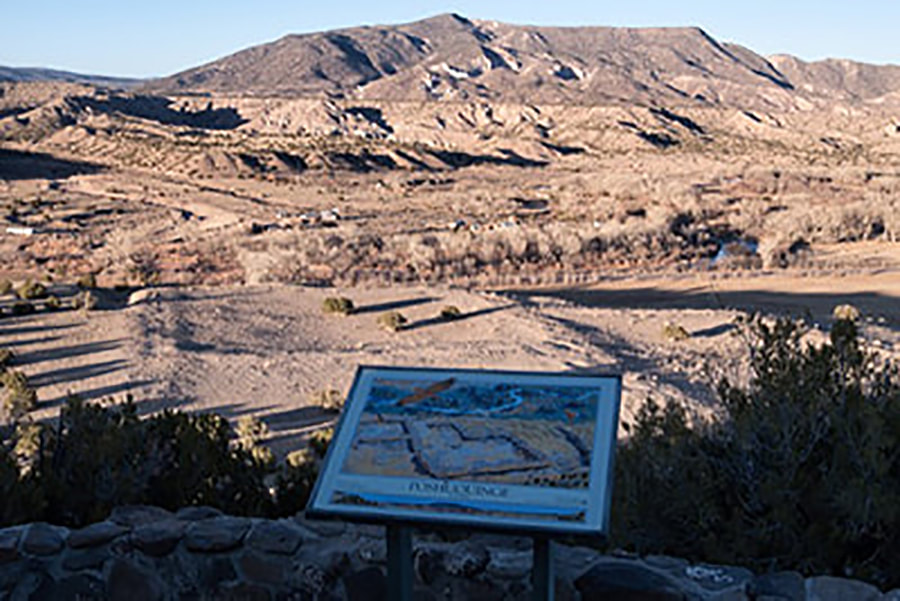
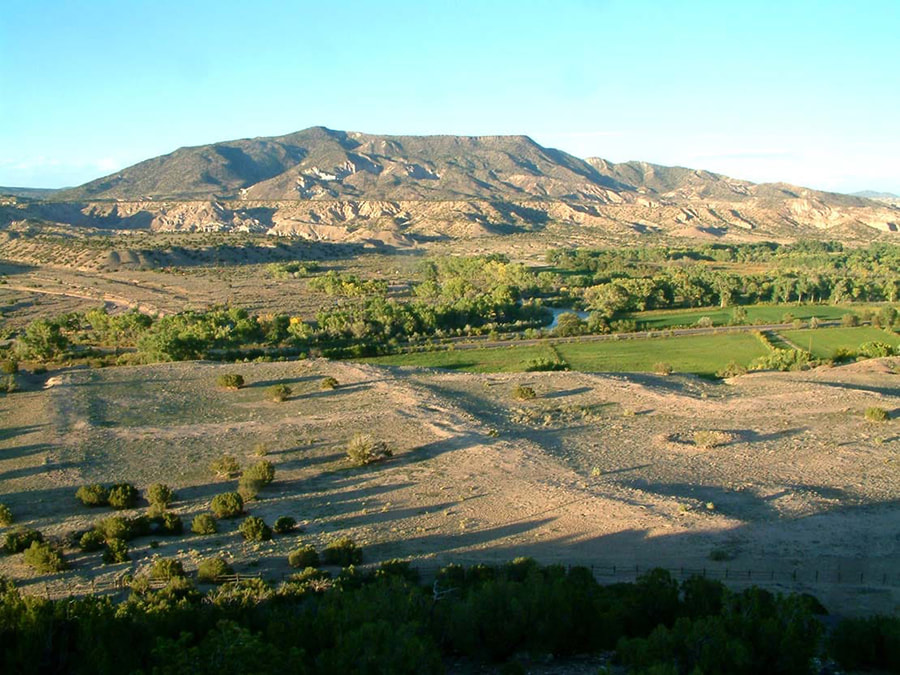

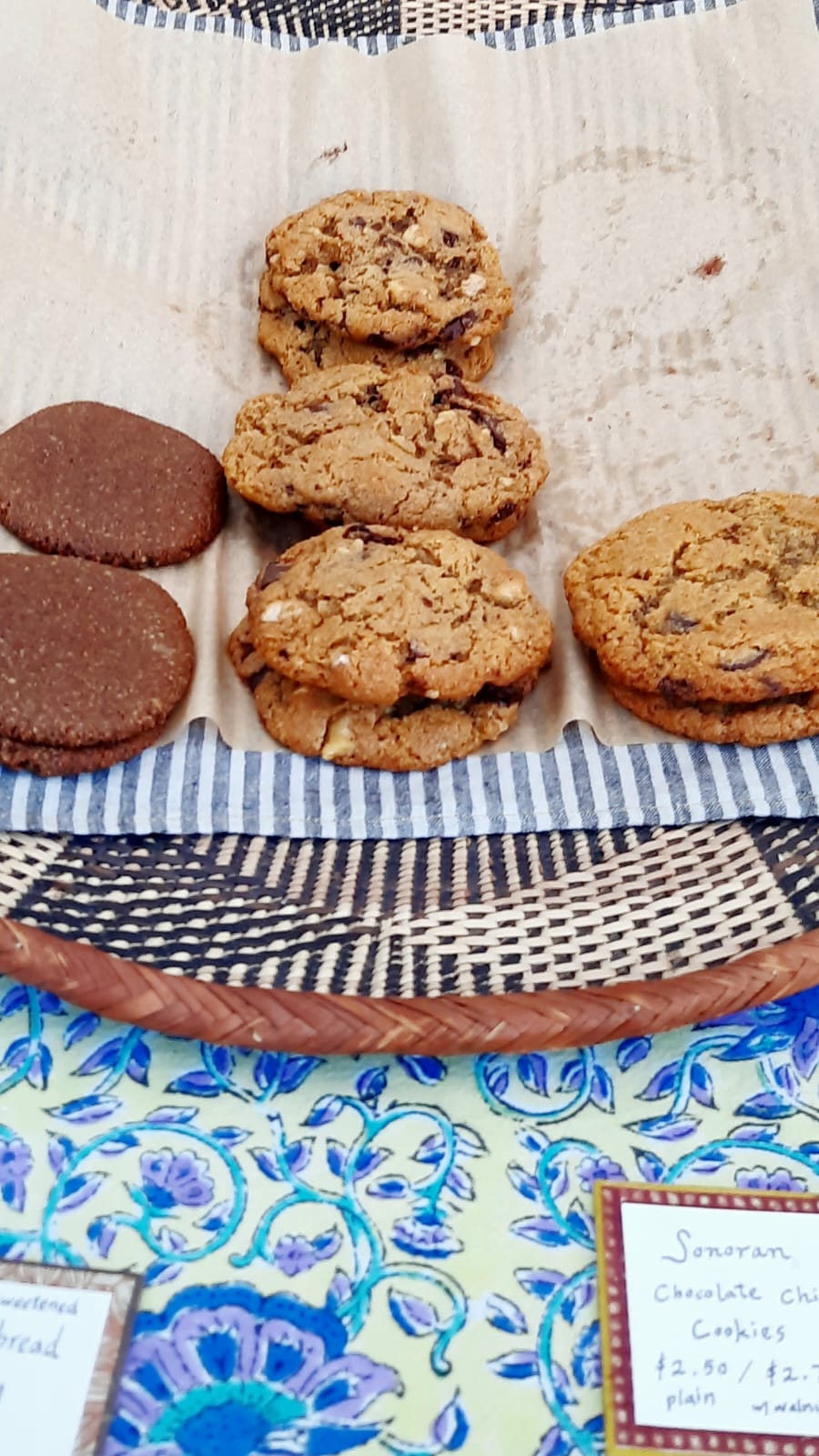


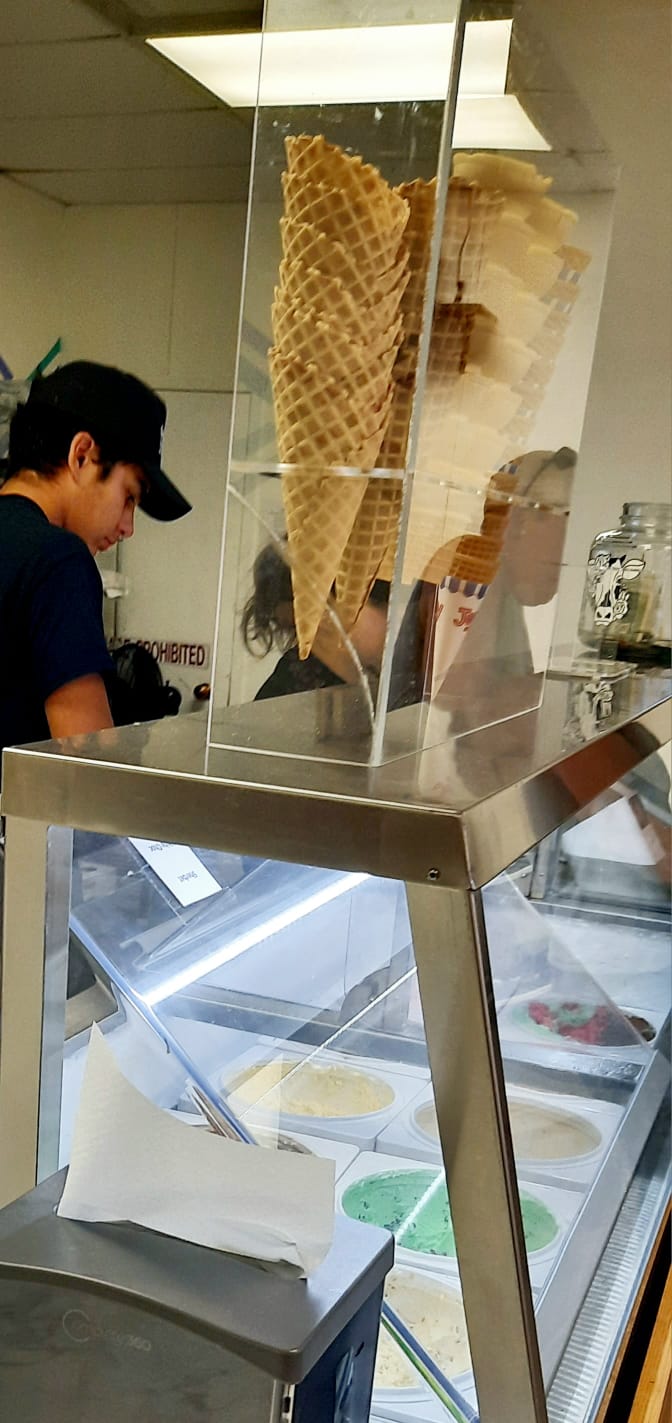

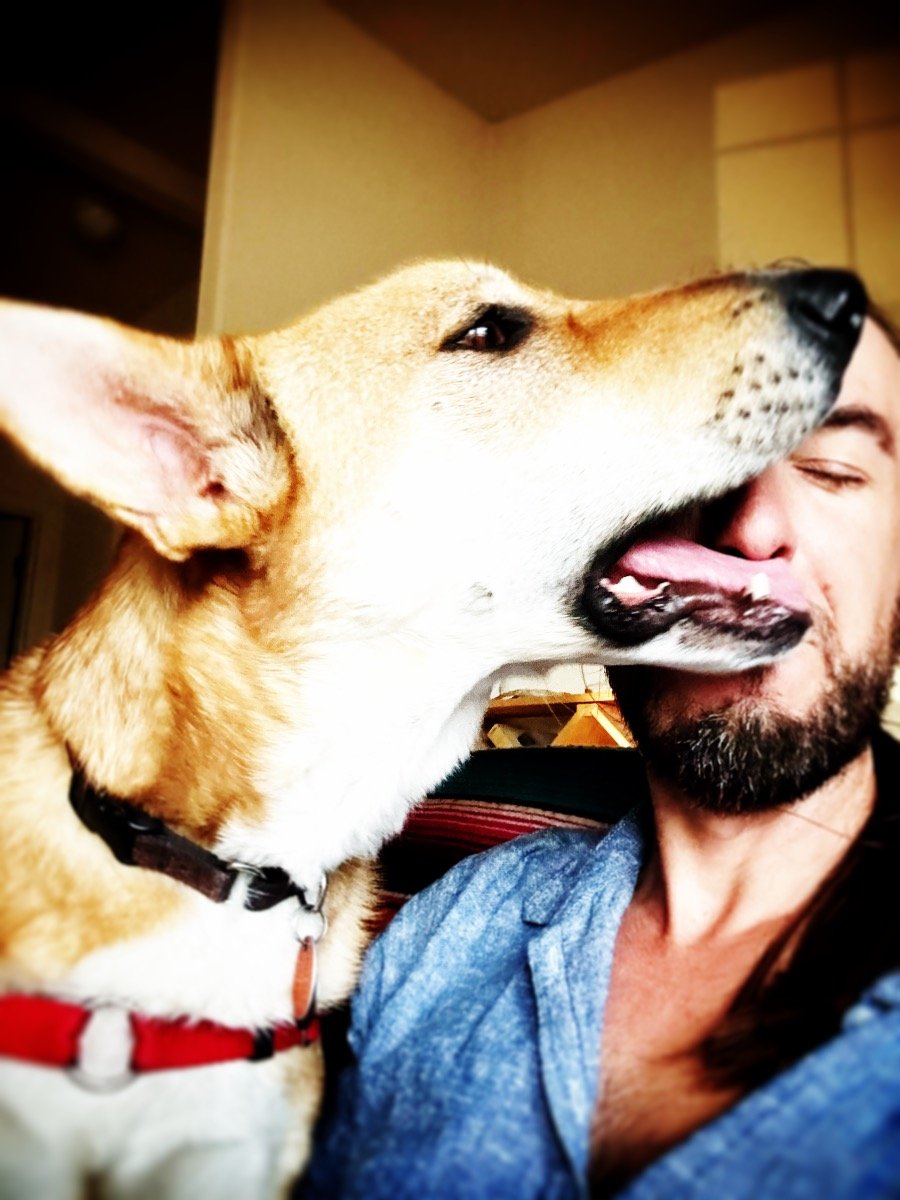
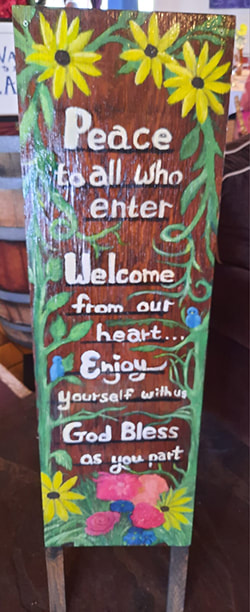

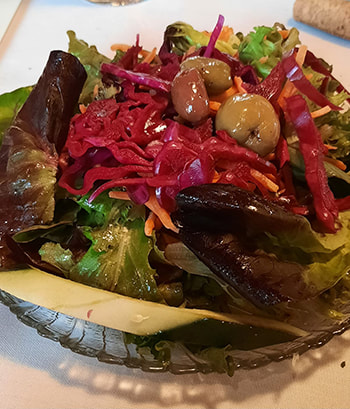
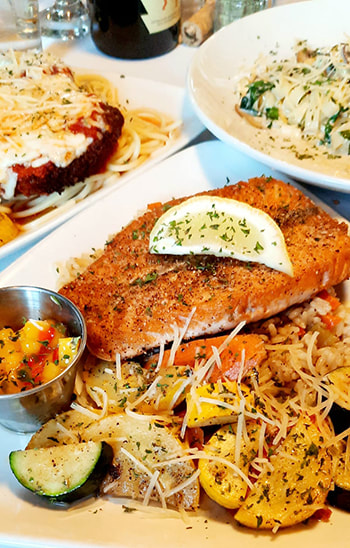


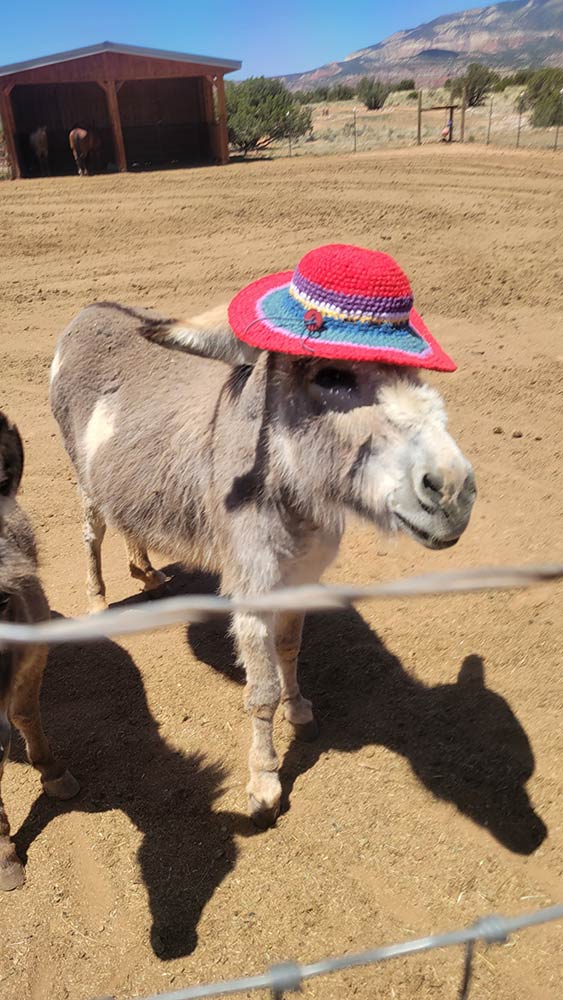
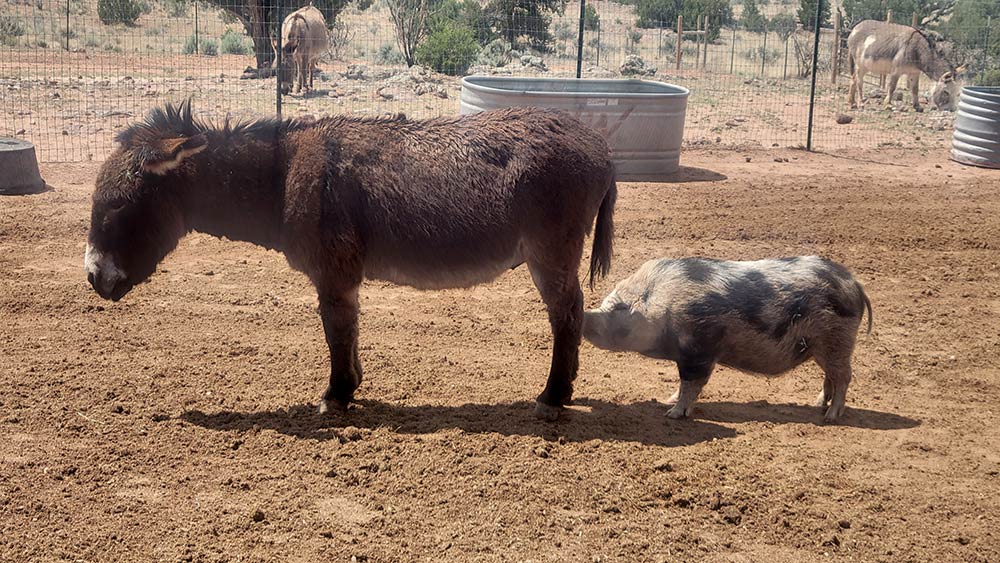
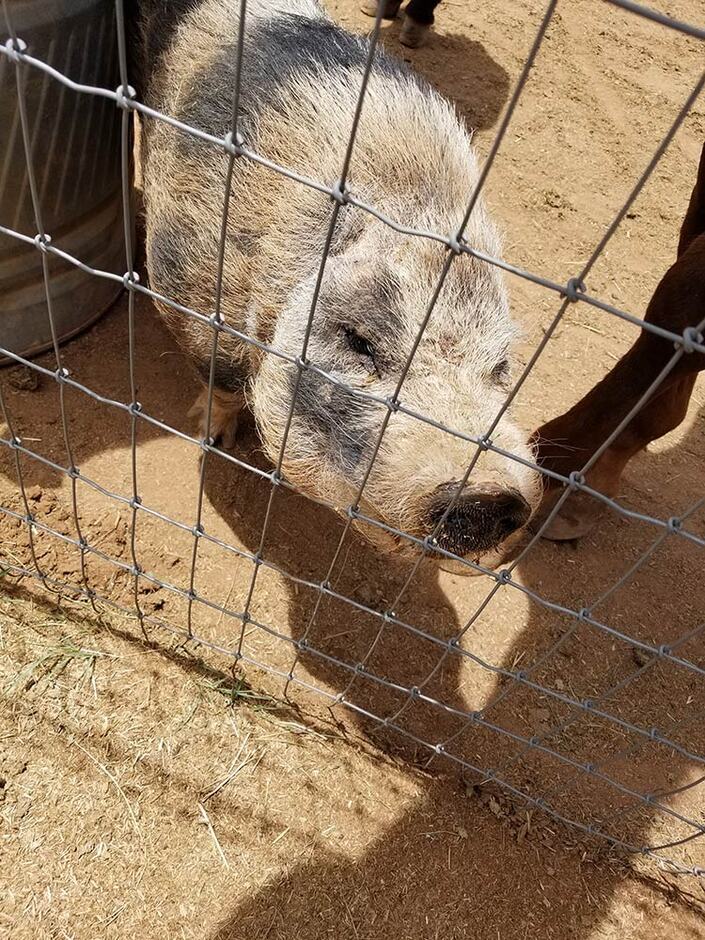
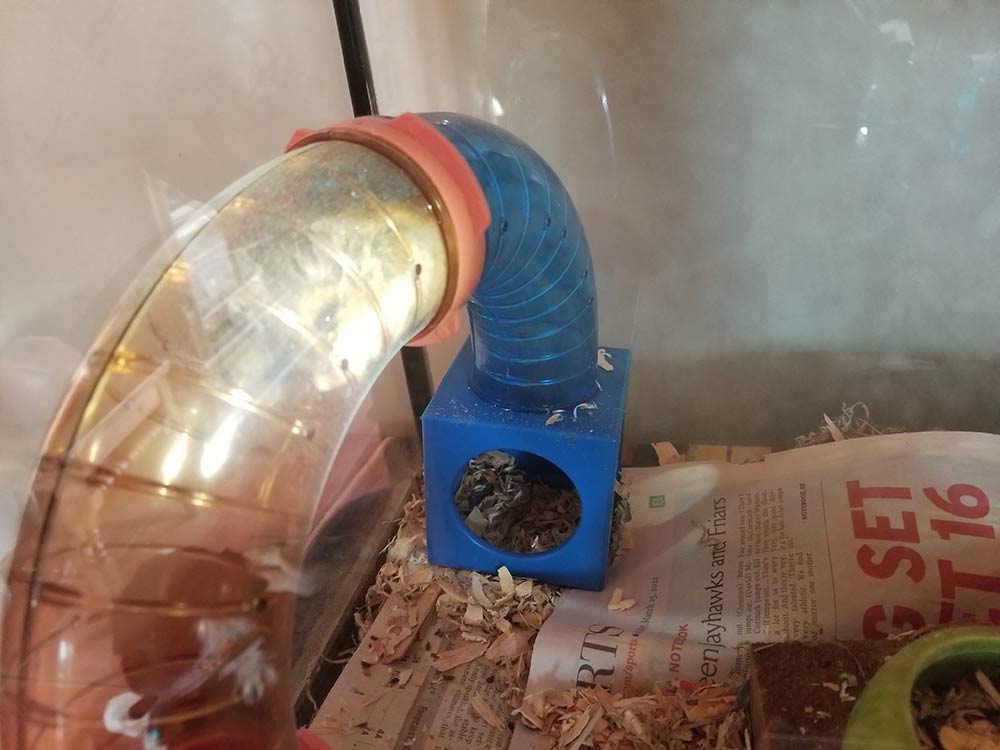
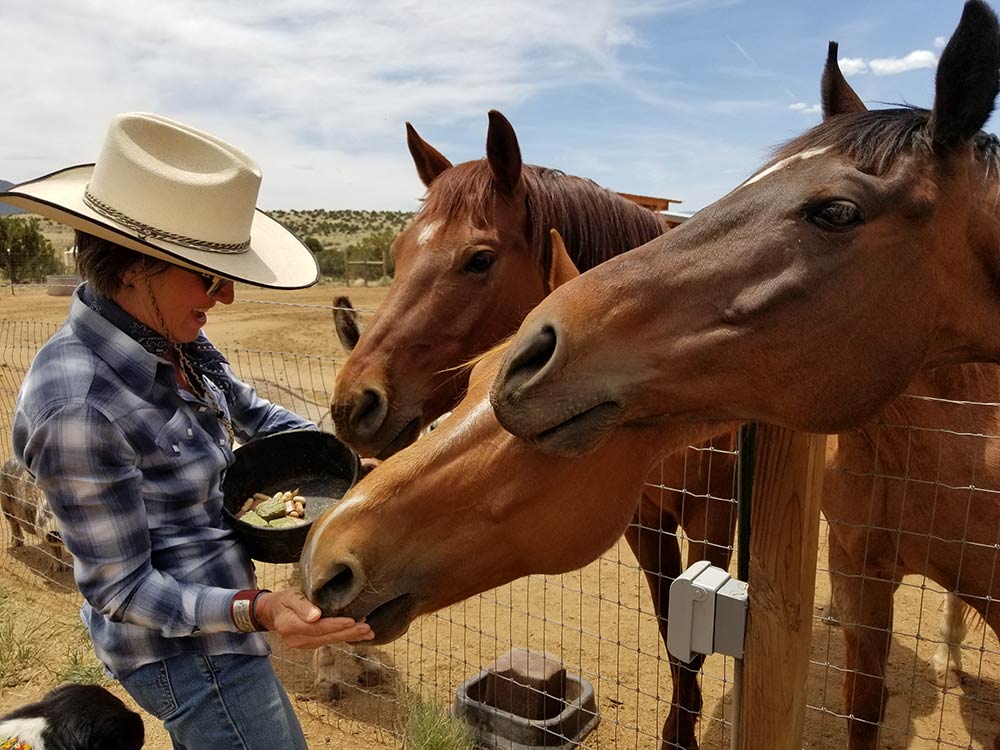
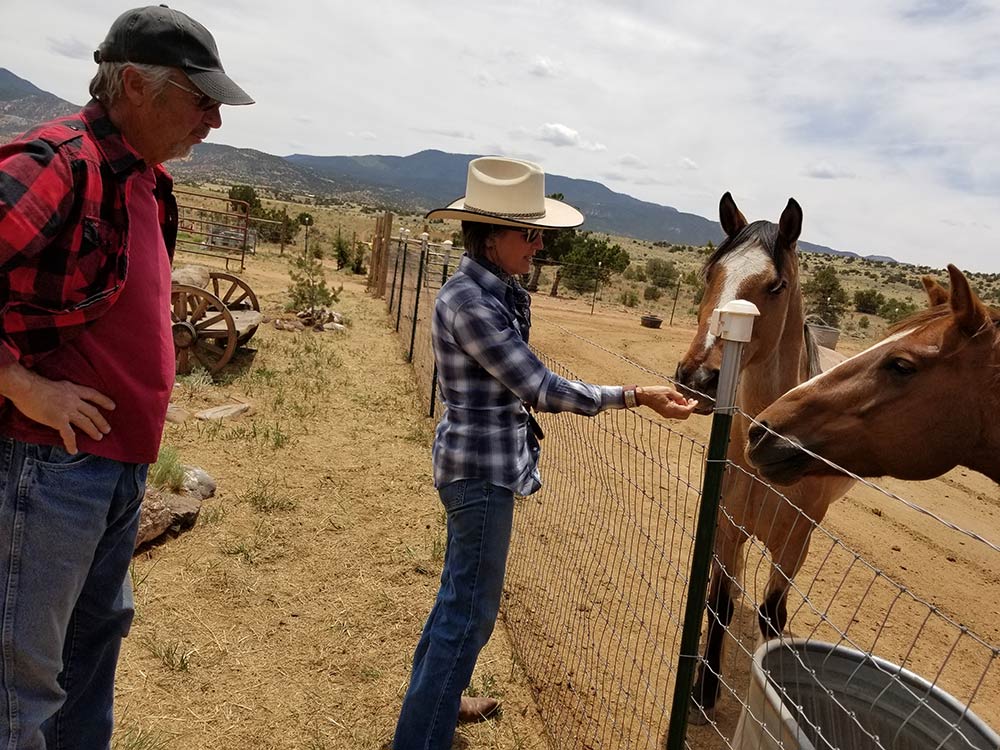
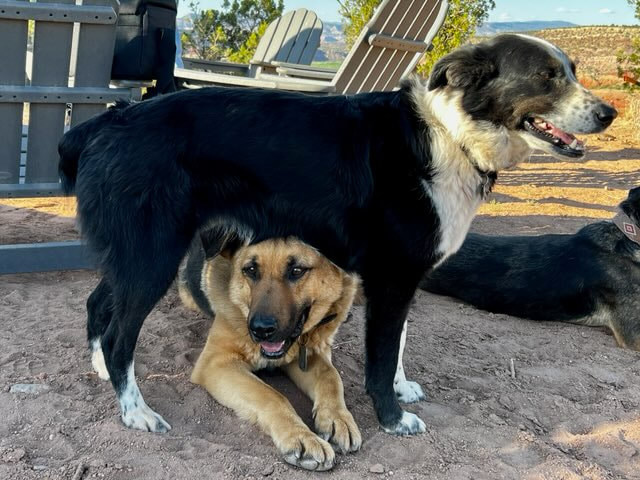
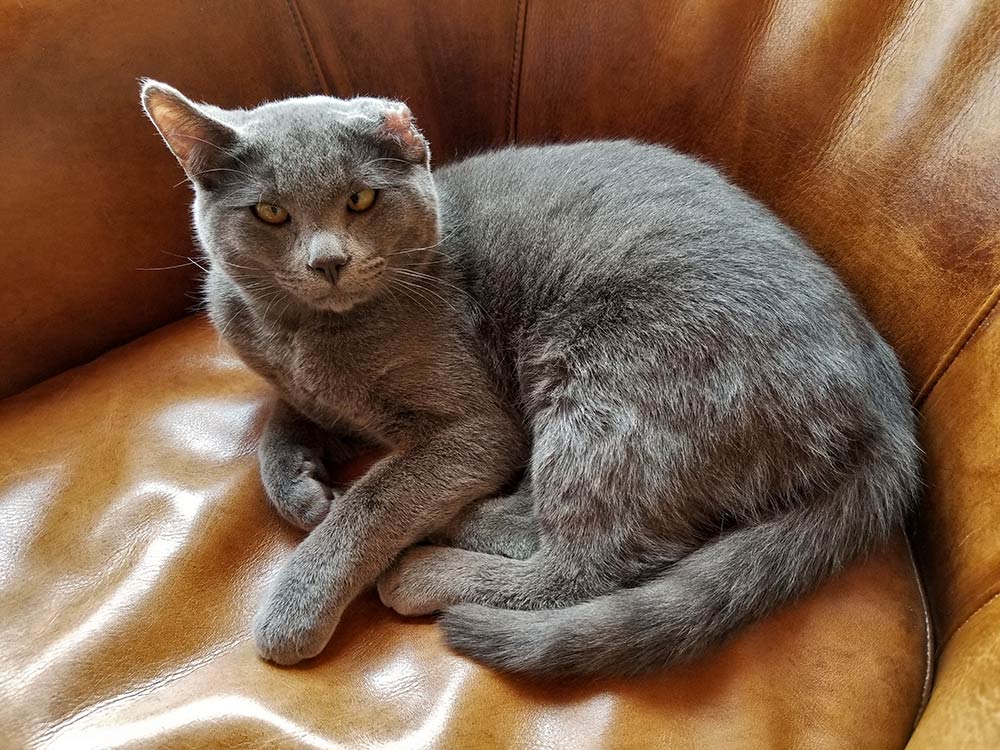




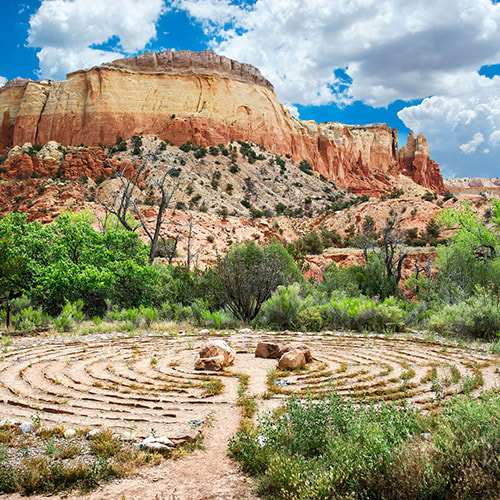


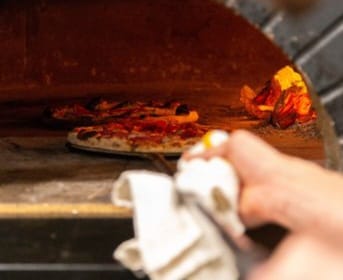


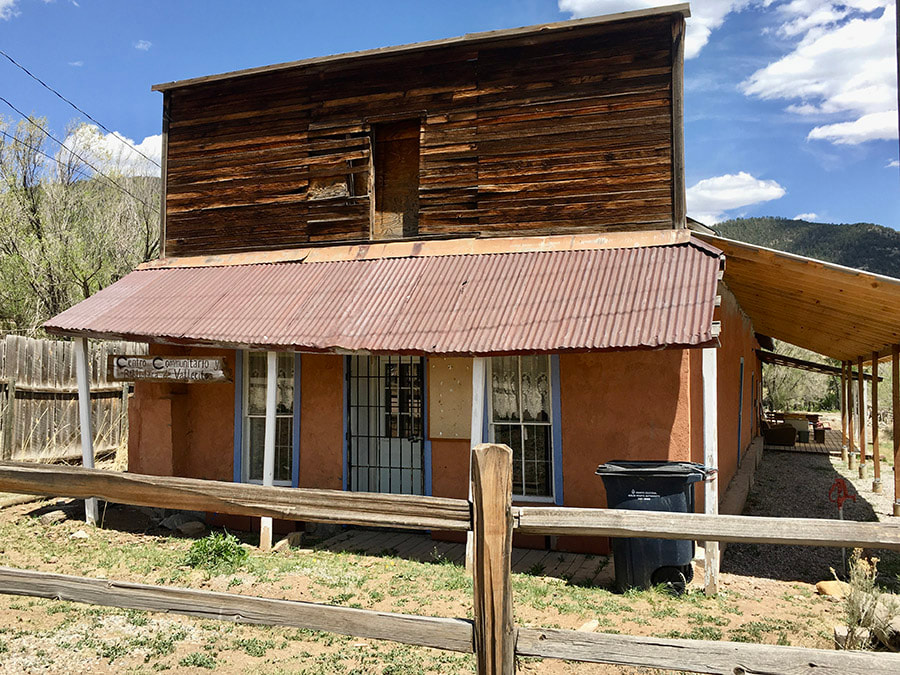
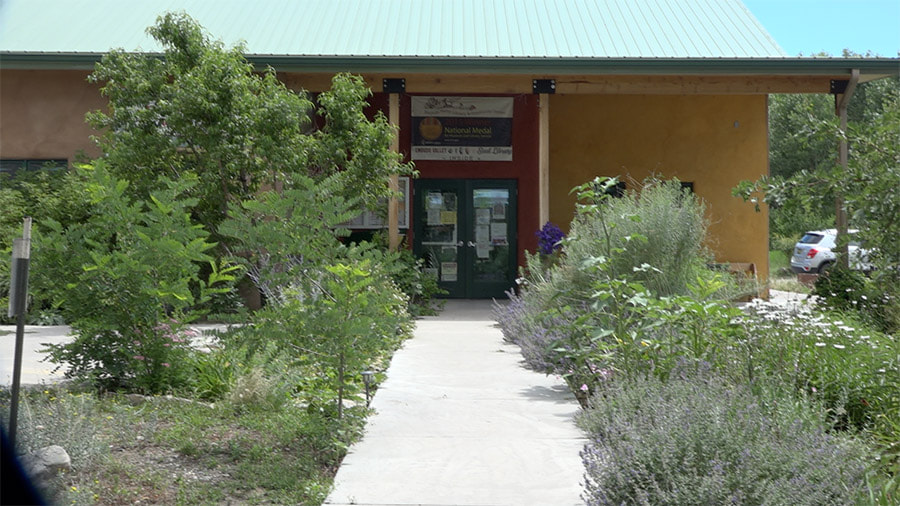
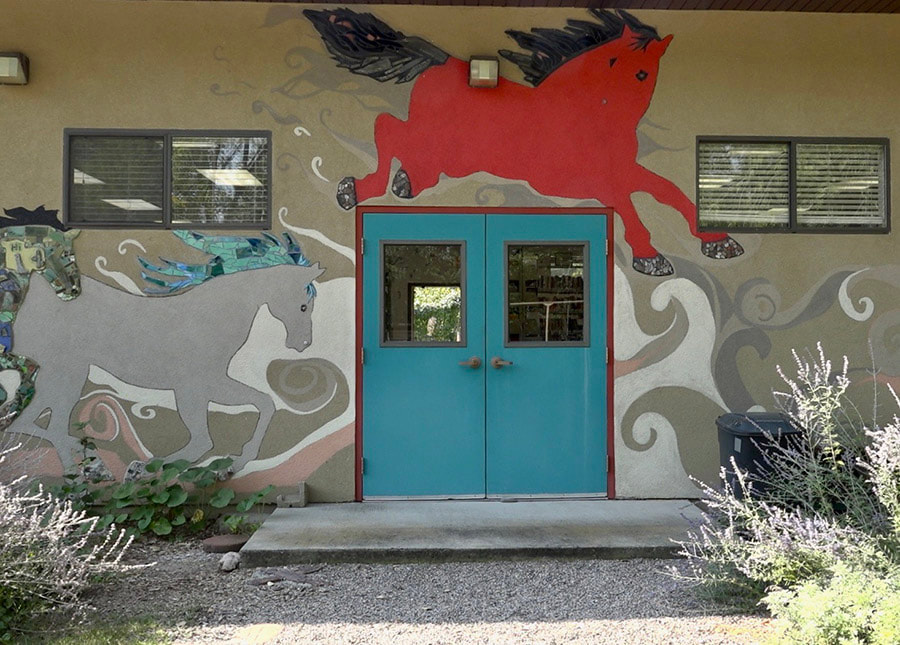
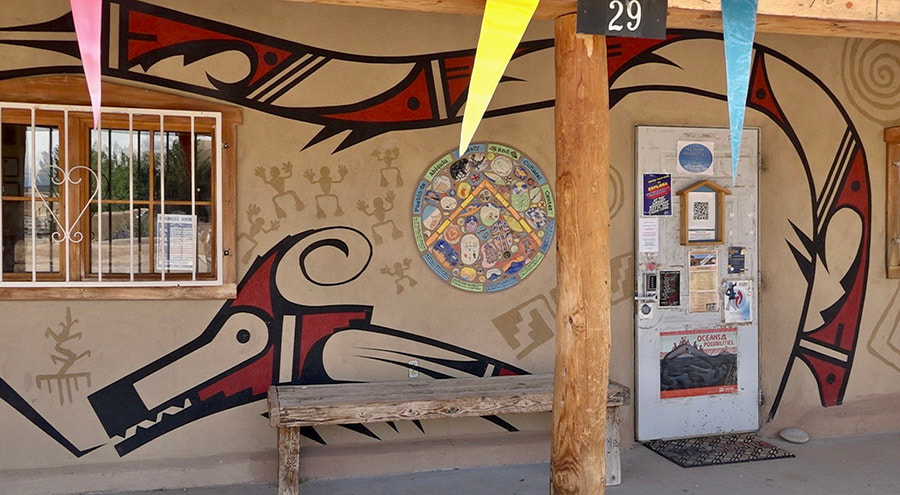
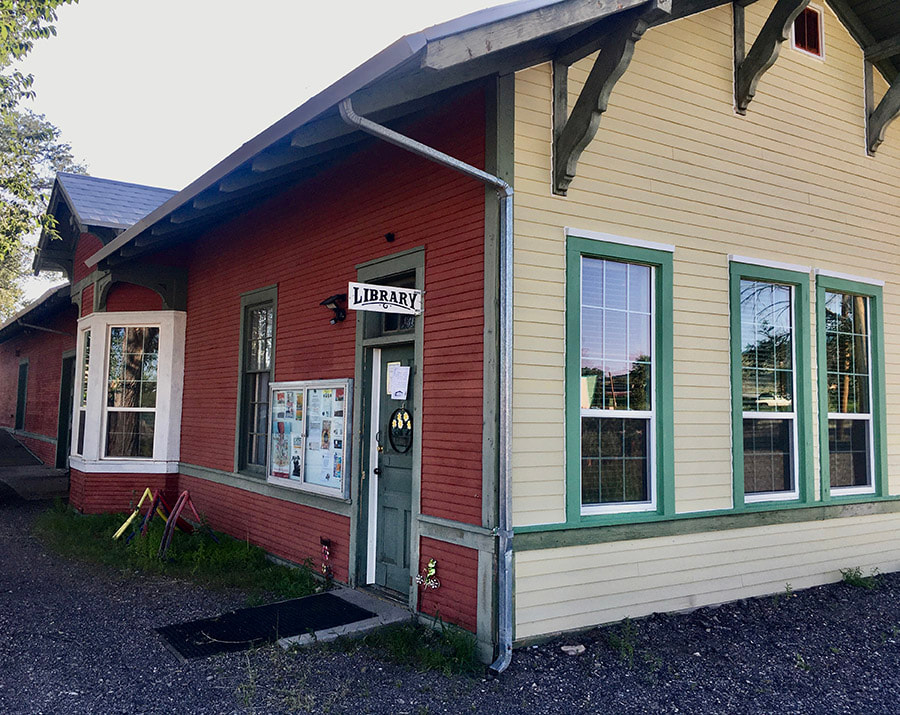



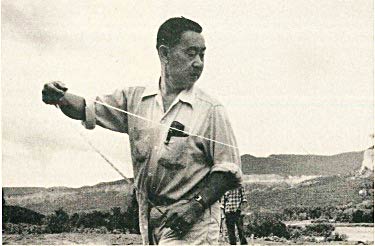
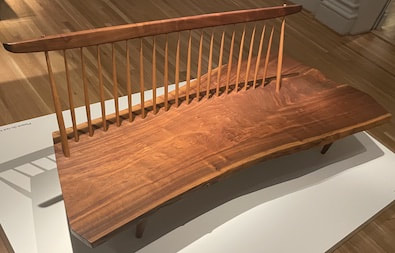
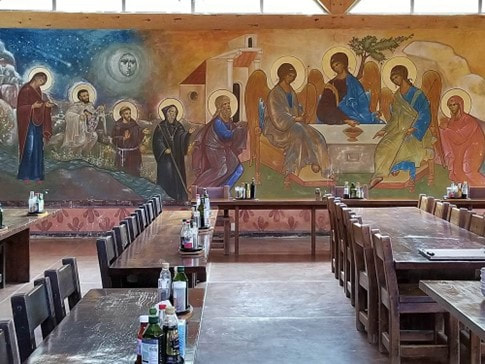
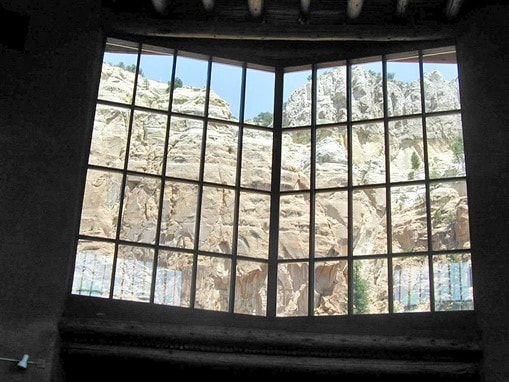
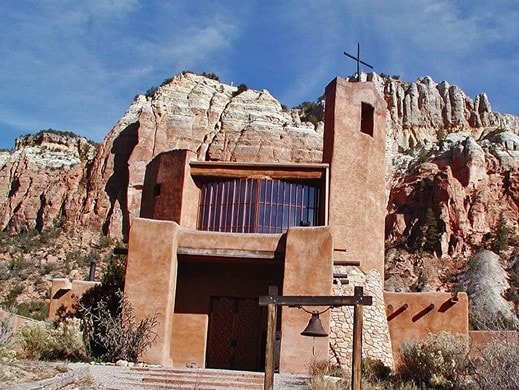
 RSS Feed
RSS Feed